- Introduction
- Sevilla: Cool Before Dorne Was Cool
- Ceuta & Algeciras: Day Trip to Africa
- Cordoba: Capital of a Caliphate
- Granada: Memories of a K-Drama
- Malaga: Bonus Content Day
- Stuff We Ate
- Stuff We Drank
- Uncategorized Thoughts
In 1492, the Emirate of Granada surrendered to the Crowns of Castile and Aragon, ending the reconquista and almost 800 years of Islamic rule in Iberia. In 1492, Christopher Columbus also discovered the Americas, kicking off the exploration and exploitation of the new world.
These two events were far from a coincidence. The Catholic Monarchs had been interested in funding the Columbus voyage and intentionally kept him around for this purpose, but were preoccupied with prioritizing resources on the final chapter of the reconquista. As soon as the last Nasrid ruler was driven off the peninsula, they jumped to support his crazy idea. The rest was grade-school history: the big bet paid off, Spain became a powerful and wealthy global empire, and the world started eating potatoes, corn, tomatoes, and chili peppers that Native Americans cultivated.
I believe, therefore, that Granada had a deeply influential role in world history. In 1492, Granada had been defending itself from Castile for 10 years, and Columbus was already 41 years old. If the small Emirate had held on for a few more years, Columbus would have been too old to make the journey, and his name would not have appeared in grade school textbooks. While the discovery of the Americas was inevitable given the continued advancements in science and technology, how people between the two worlds interacted could have been different if someone else (less brutal, perhaps) had initiated the contact.
But alas, history classes in school did not mention Granada. We never heard of this city until last year, when we watched a Korean drama on Netflix called the Memories of the Alhambra. It was a romantic sci-fi loosely based in Granada, with less than 2 minutes of footage of the actual Alhambra. The show, though, made an impression and put this city and its monument on our mental map.
The Alhambra
Granada was settled in and developed later in history than the other cities on our trip. The political power that resided here was also the weakest among the major players in the Andalucian history. By the time Emirate of Granada was a thing, Castile and Aragon had taken most of the land on the Iberian Peninsula, shrinking the Muslim territory to a tiny fraction of what it used to be. However, Granada absorbed the Muslim and Jewish refugees exiled from lands freshly conquered by those Christian kingdoms, allowing it to grow rapidly and flourish. The Alhambra, the most visited monument in Andalucia, was living proof for Granada’s prosperity.
The word “alhambra” was Arabic meaning “the red one”, named after the color of its bricks. So when we call it “the Alhambra” in English or “la Alhambra” in Spanish, it’s basically “the the red one” with a redundant article.
In terms of individual components, the Alhambra wasn’t so different from other things we saw on this trip. However, as a massive compound at the top of a mountain, it consolidated multiple impressive features into a single attraction. In fact, the Alhambra was so large that we only managed to see a portion of it before having to retreat from the mid-day sun.


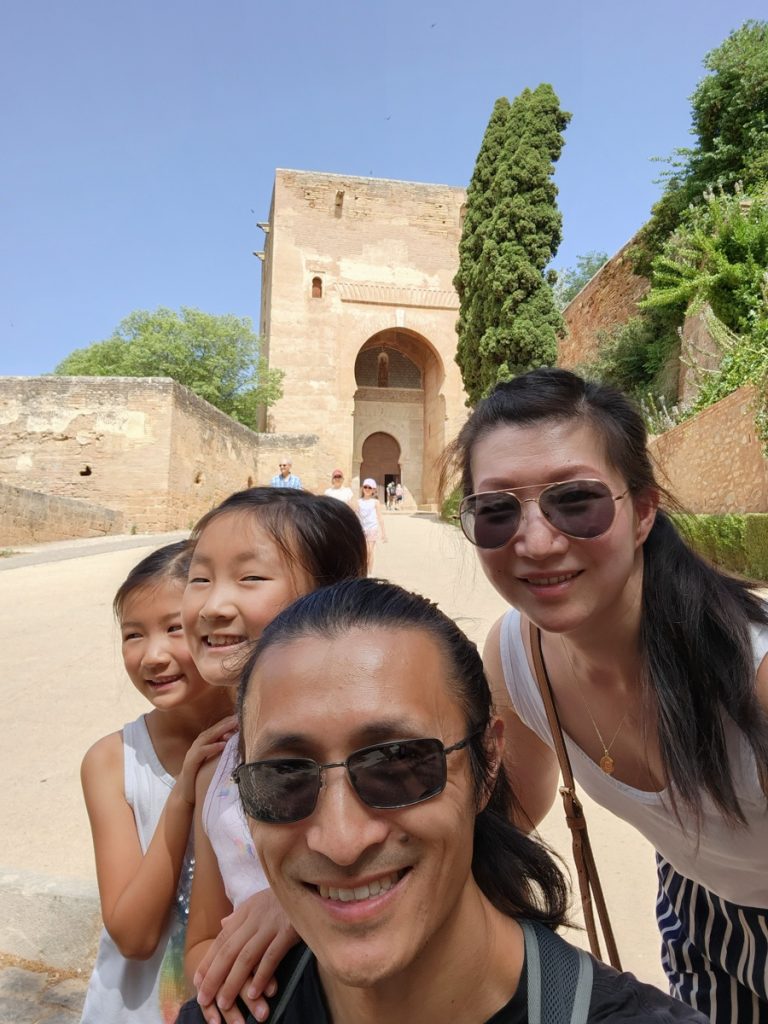
To get to Alhambra, we hiked a mile uphill from the hotel. The main entrance was placed all the way in the back of the complex, where there was ample space for tour bus parking, and three times farther from town than Gate of Justice, the original main entrance. Good thing it was first thing in the morning when the air was still cool, and our kids could walk. Plenty of people opted to take a bus or taxi up the hill, which required a major detour around town and missed some cool landmarks along the way.
The Alhambra was crazy crowded with tourists when we visited. However, we learned that it was a mere fraction of what it used to be… COVID restrictions still made it impossible for many would-be Asian tourists to leave their home countries. To prevent ticket scalping, I guess, there were ID check points at the main entrance and at each internal section. Our passports got checked more times here than they did at the airport!
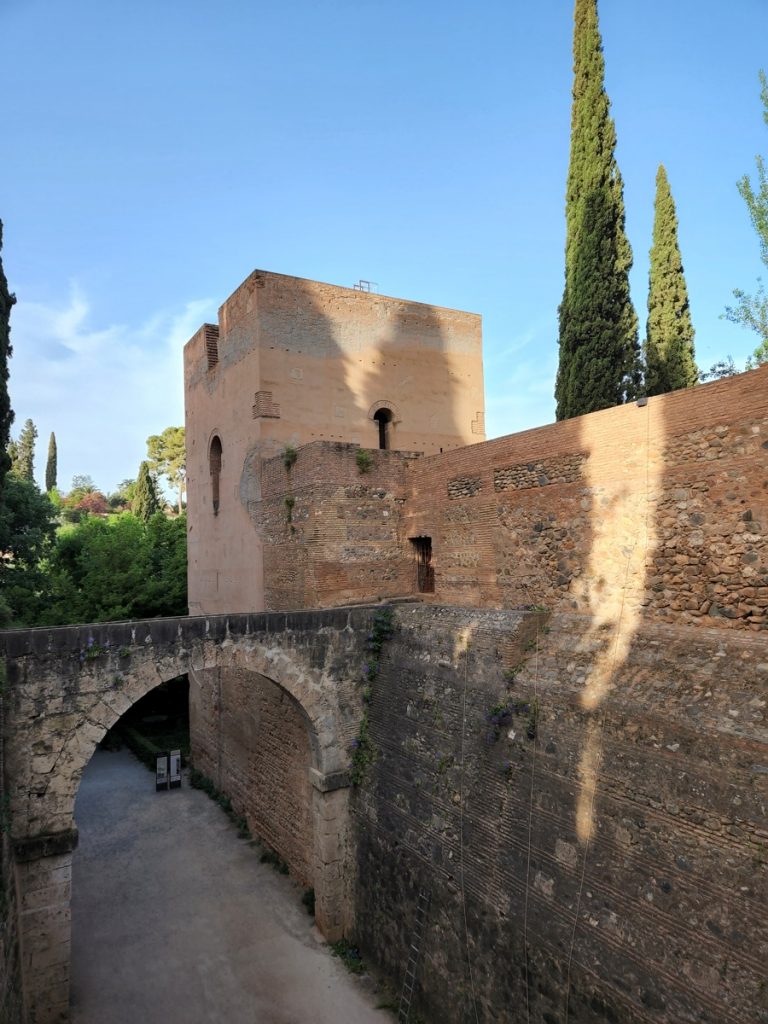
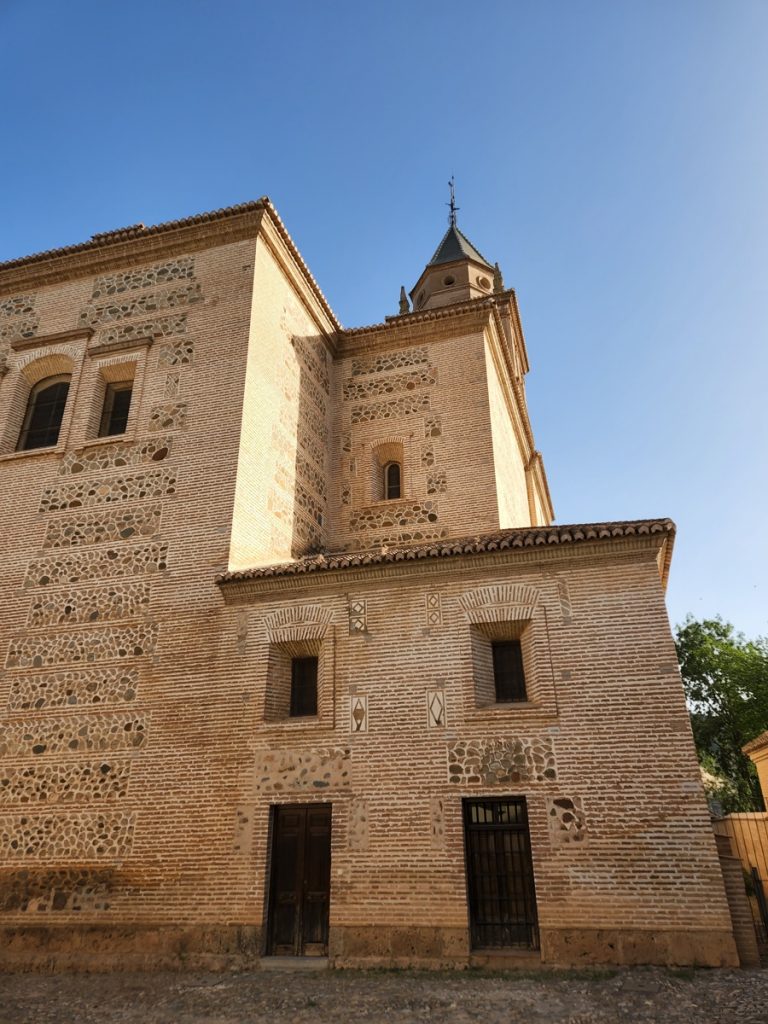
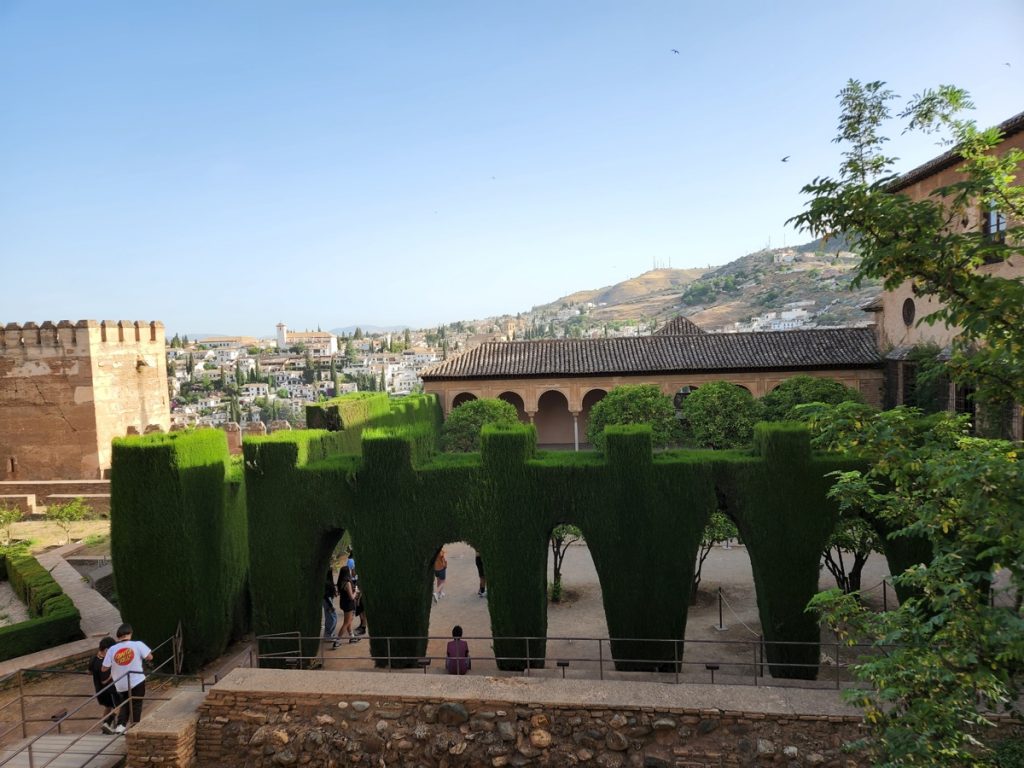
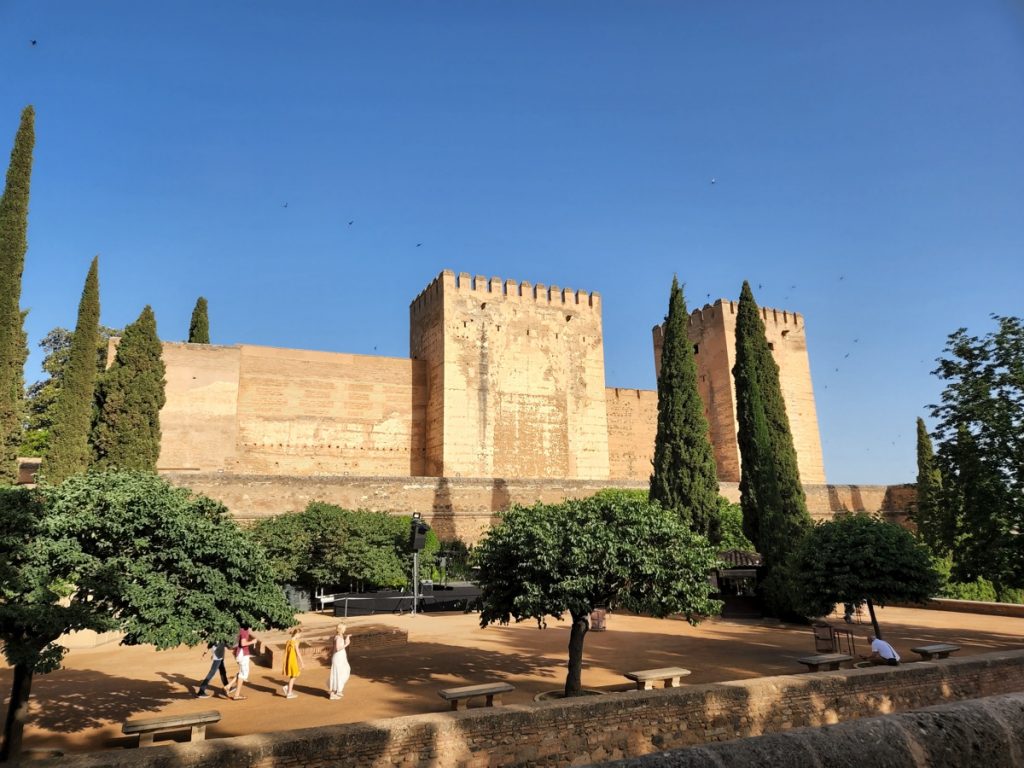
When purchasing a ticket to the Alhambra, one must pick a date. The ticket holder is entitled to roam around any part of the large complex throughout the ticketed date, with the exception of the Nasrid Palaces. Included on the same ticket, one must also pick a entry time for the Nasrid Palaces. Due to their confined space and popularity, these entry times seemed to be strictly enforced.
The Nasrid Palaces were the living quarters of the Nasrid Dynasty emirs, and thus the heart of the Alhambra. Similar to the Alcazar in Sevilla, they had domed archways, intricate carvings on walls, reflection pool in the courtyard, etc.. Even though later occupants like Carlos V of the Habsburg built significant other structures and gardens within the Alhambra, tourists including us still primarily wanted to see the original.
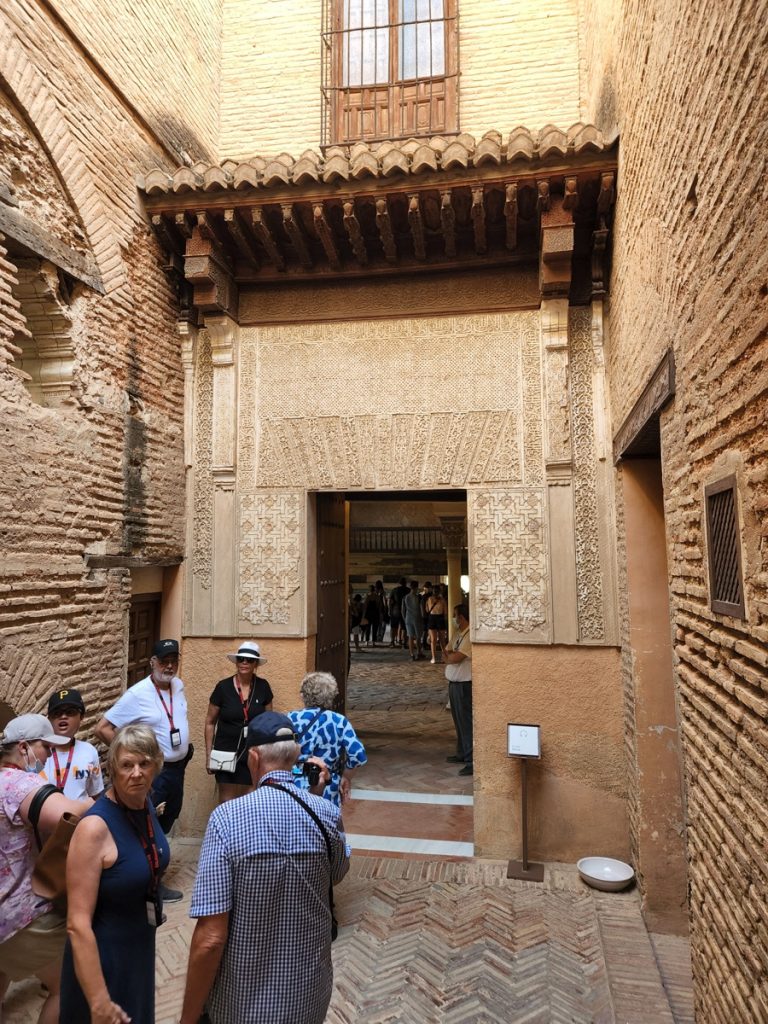
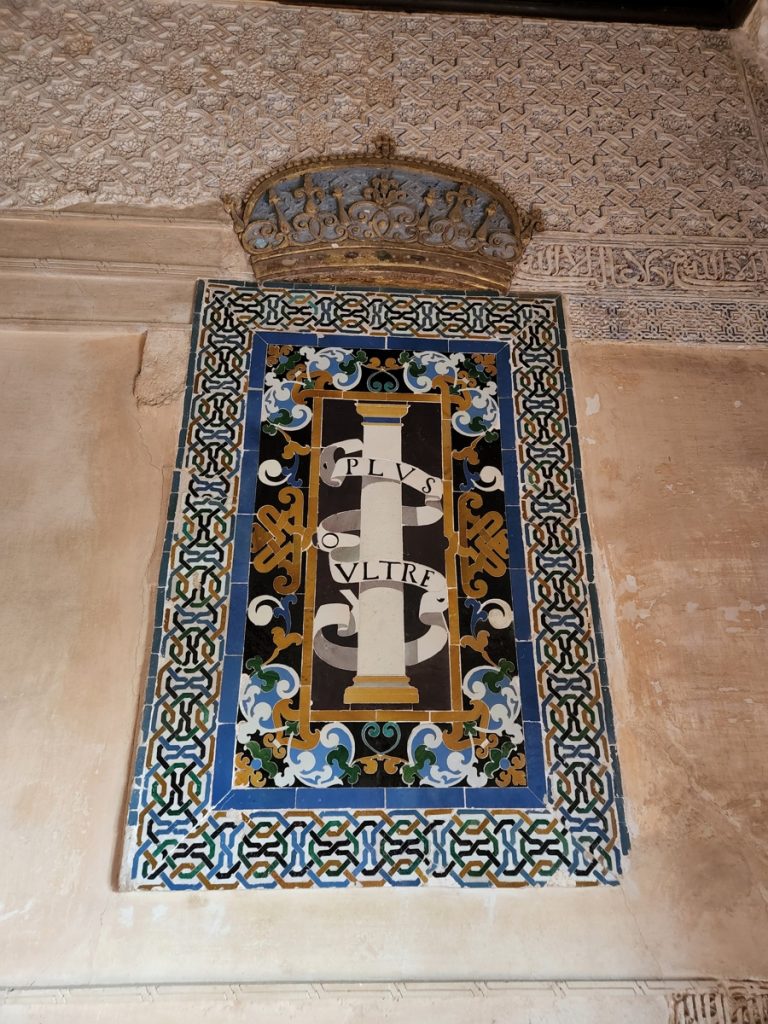


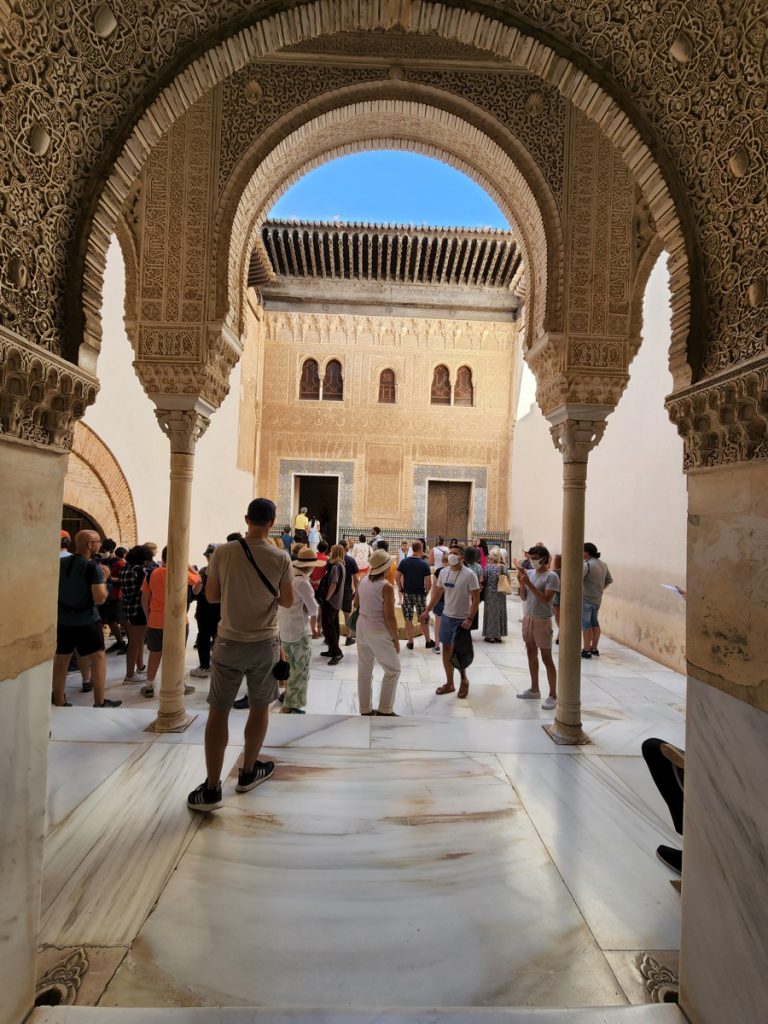
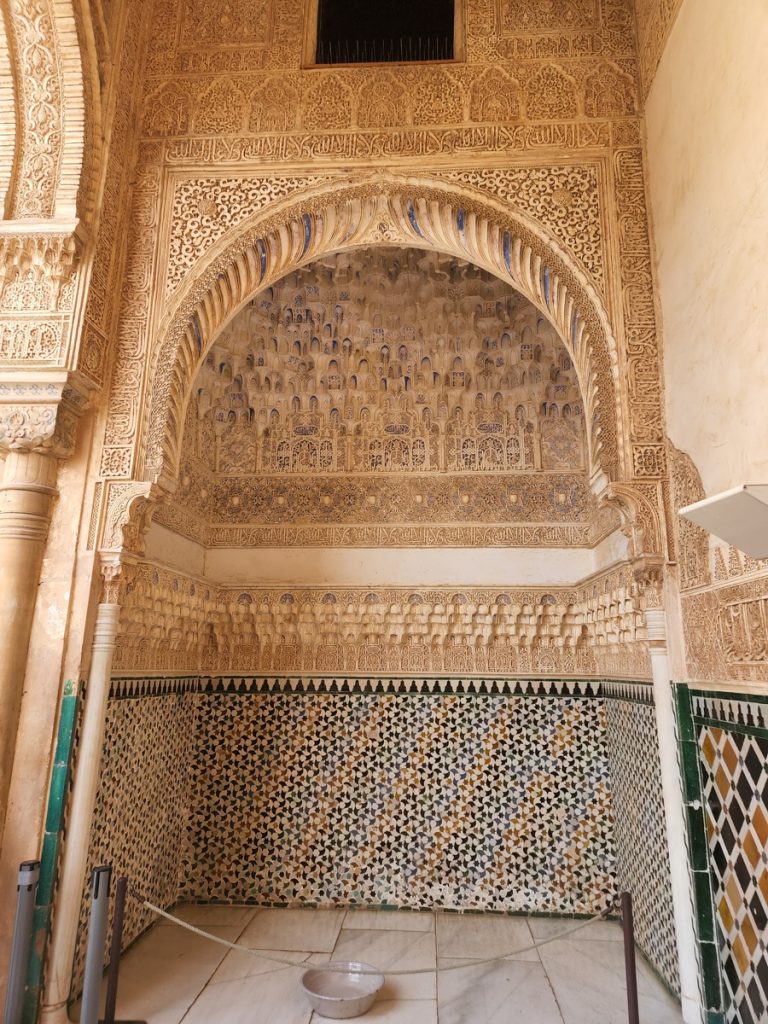
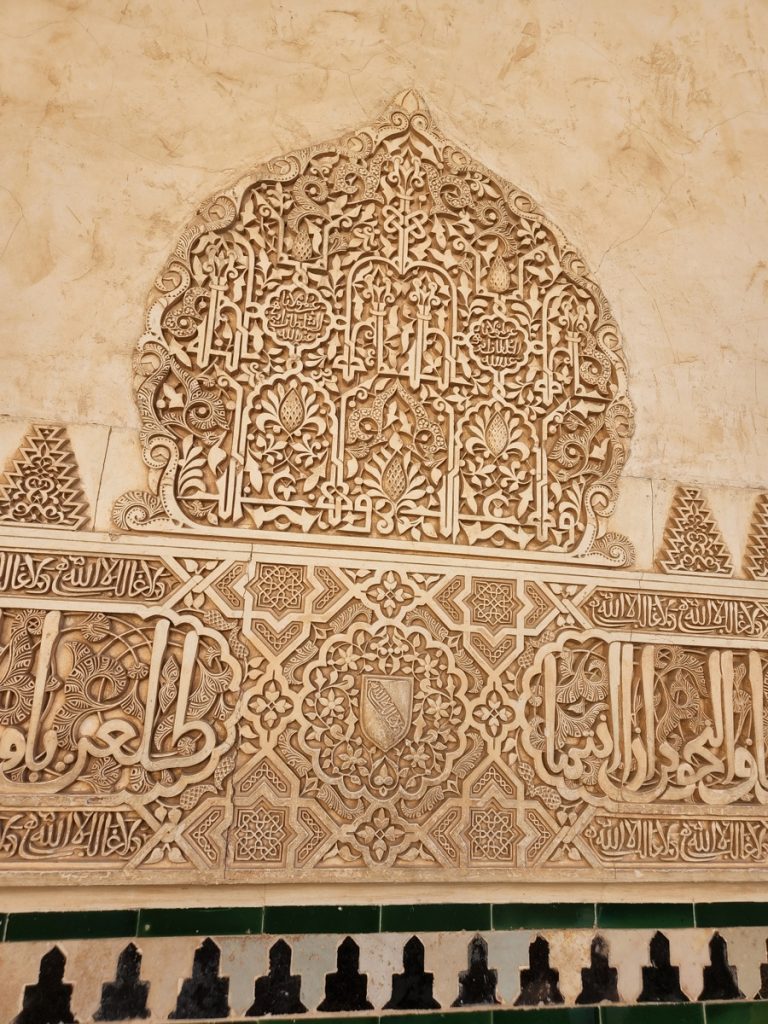
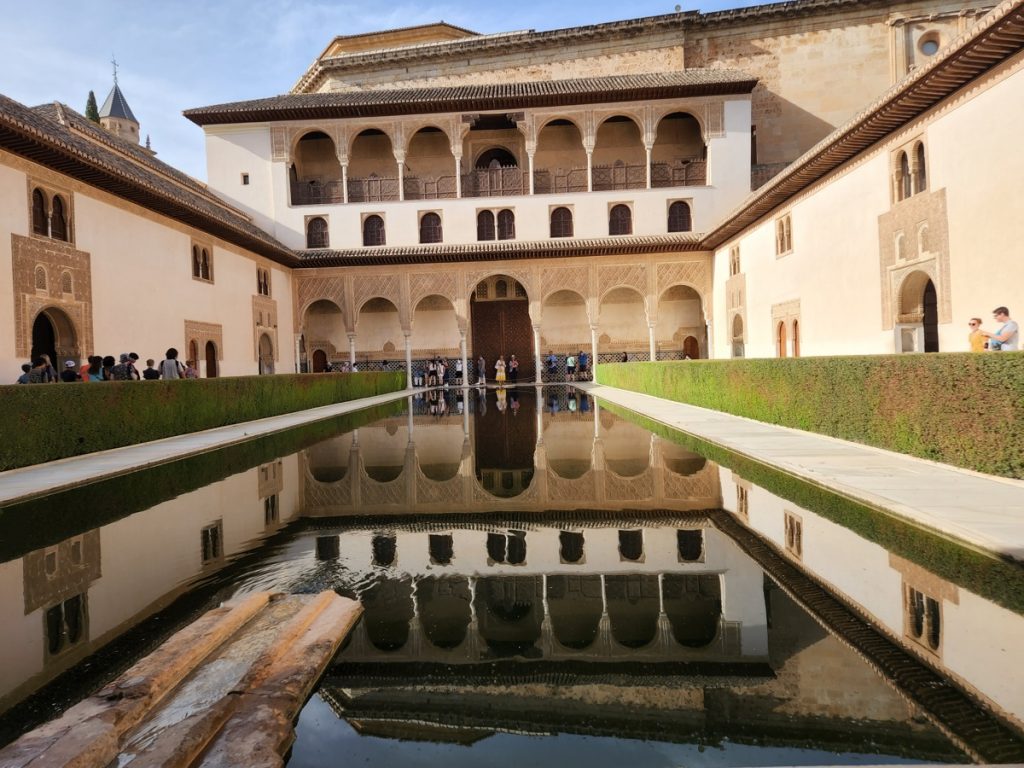
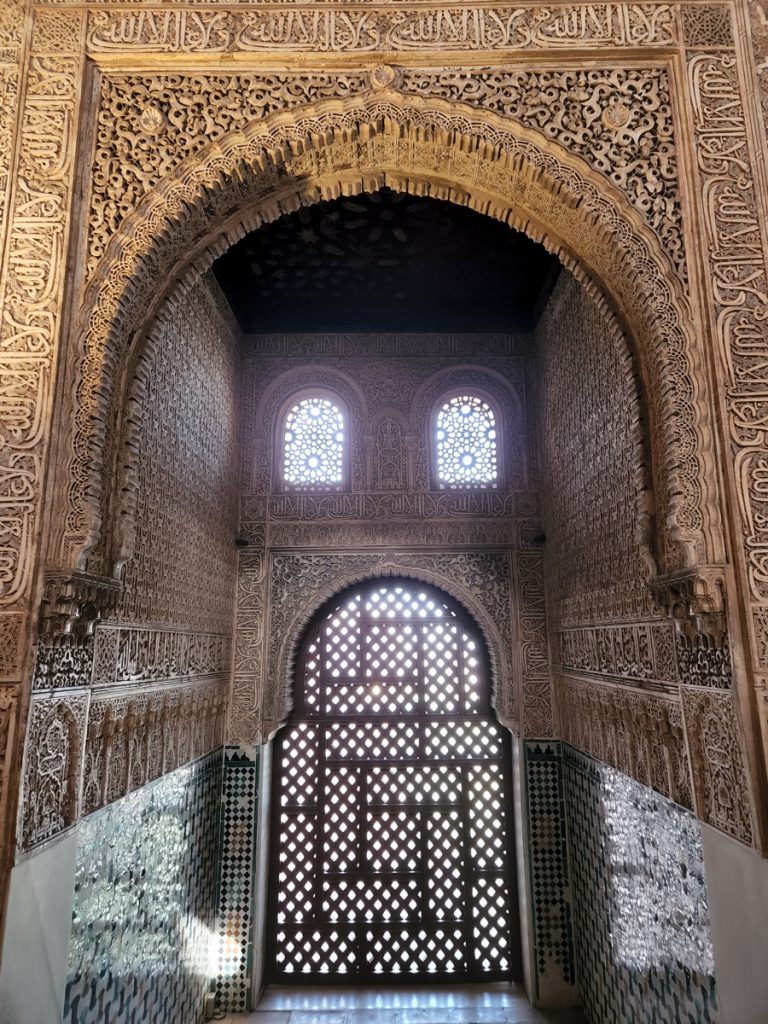
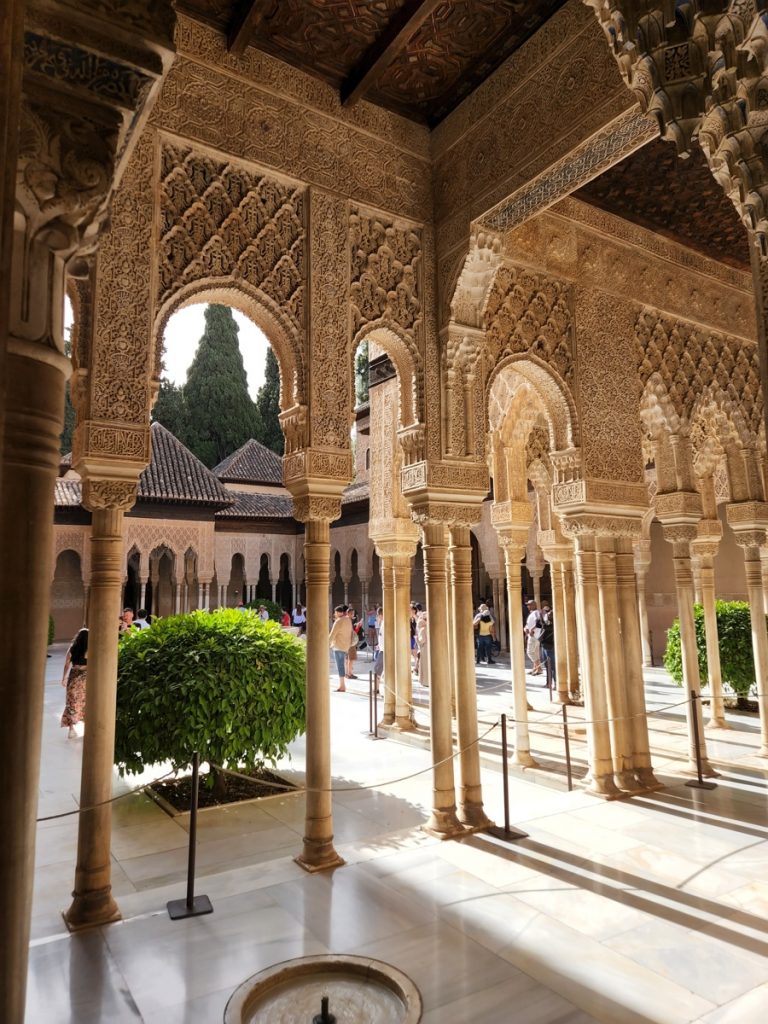
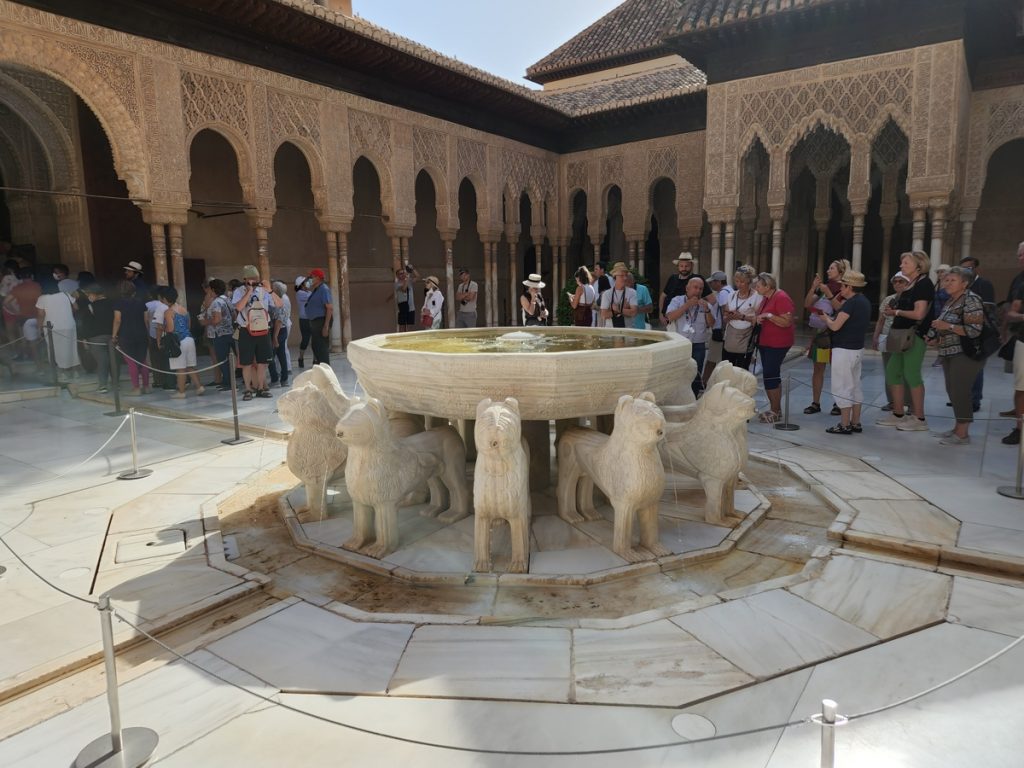
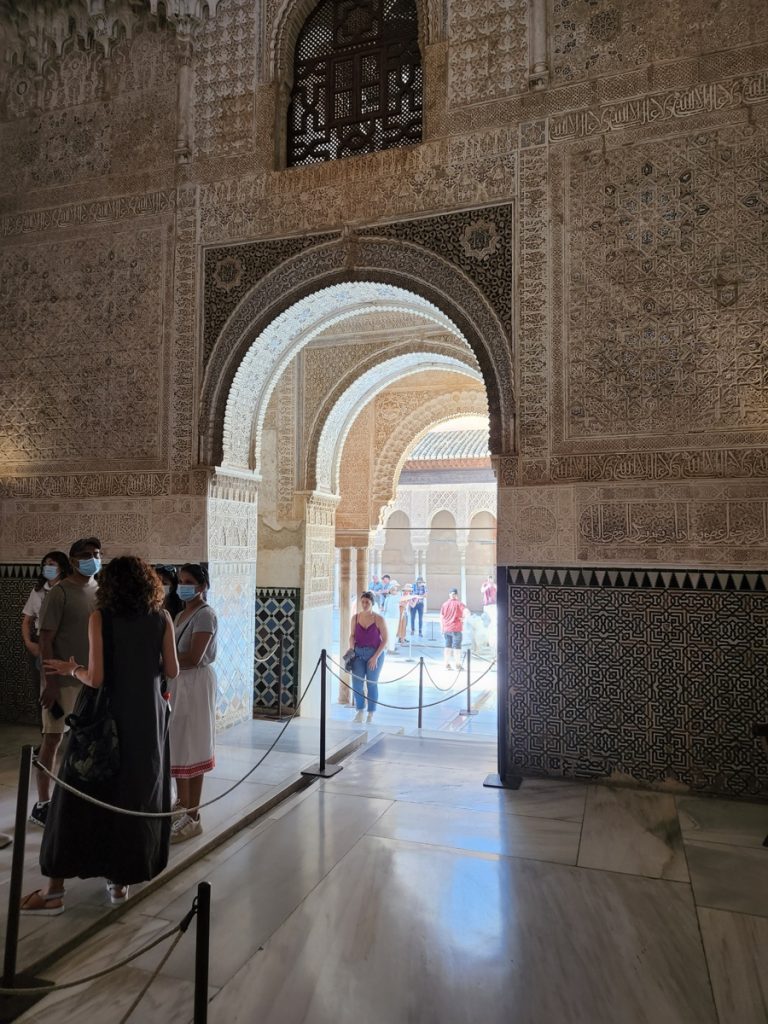
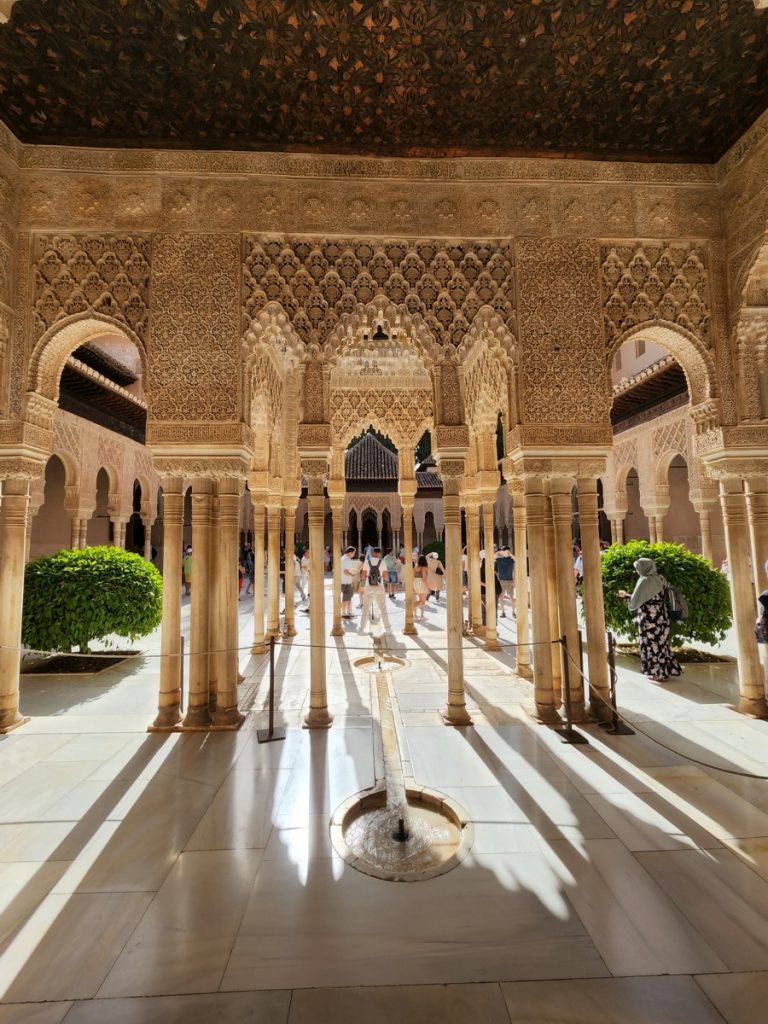
At the tip of Alhambra overlooking the city was Alcazaba, the original fortress that later evolved into the giant palace complex, and the barracks for the troops. I enjoyed this area more because it was a lot more spacious, filled with fewer tourists, and had a lot of defensive towers providing great views of the city.
For fans of the K-drama, the Alcazaba was where Jin-woo found the spiral staircase down to the dungeon where he was almost killed by zombies. Those stairs were locked.
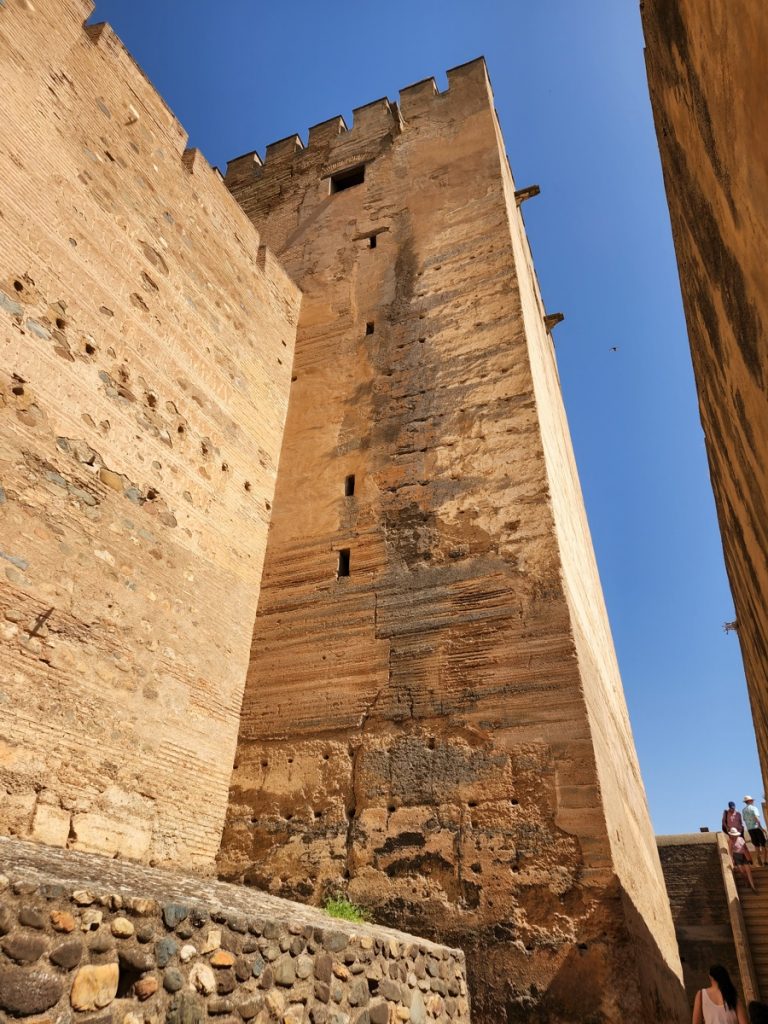
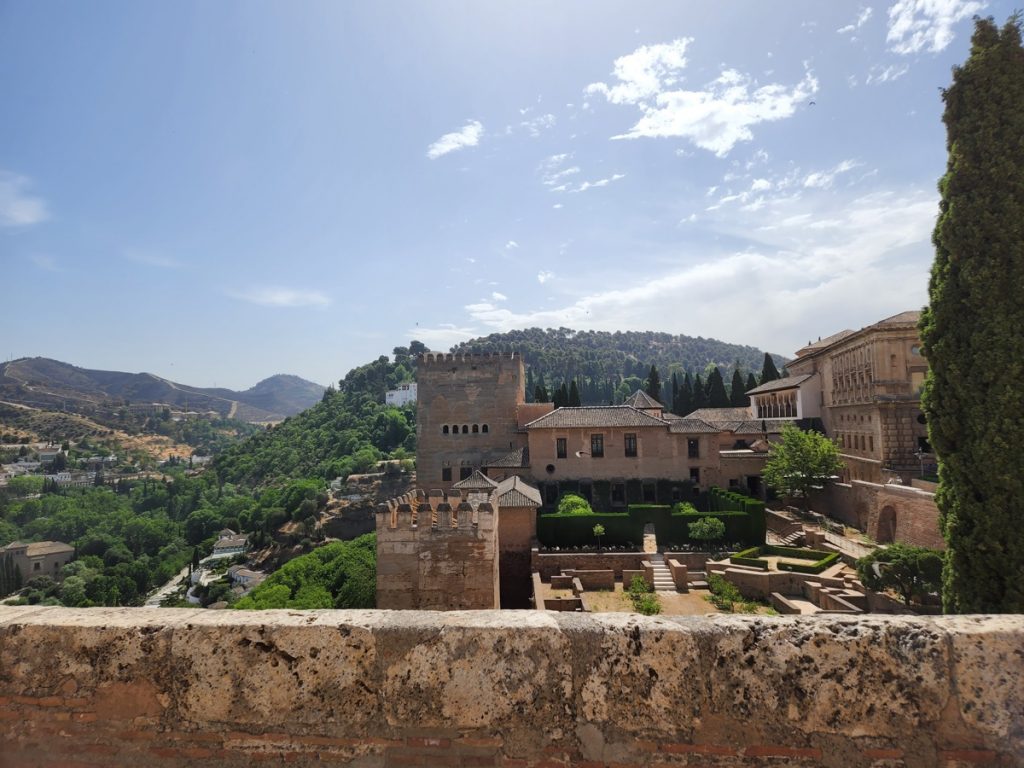
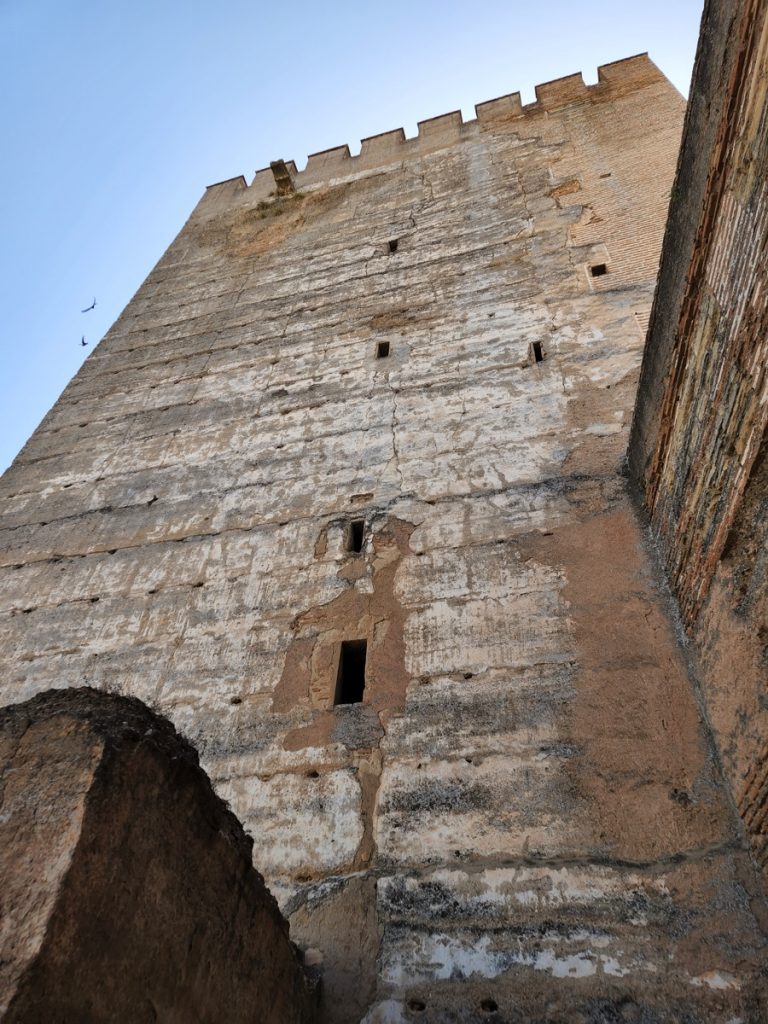
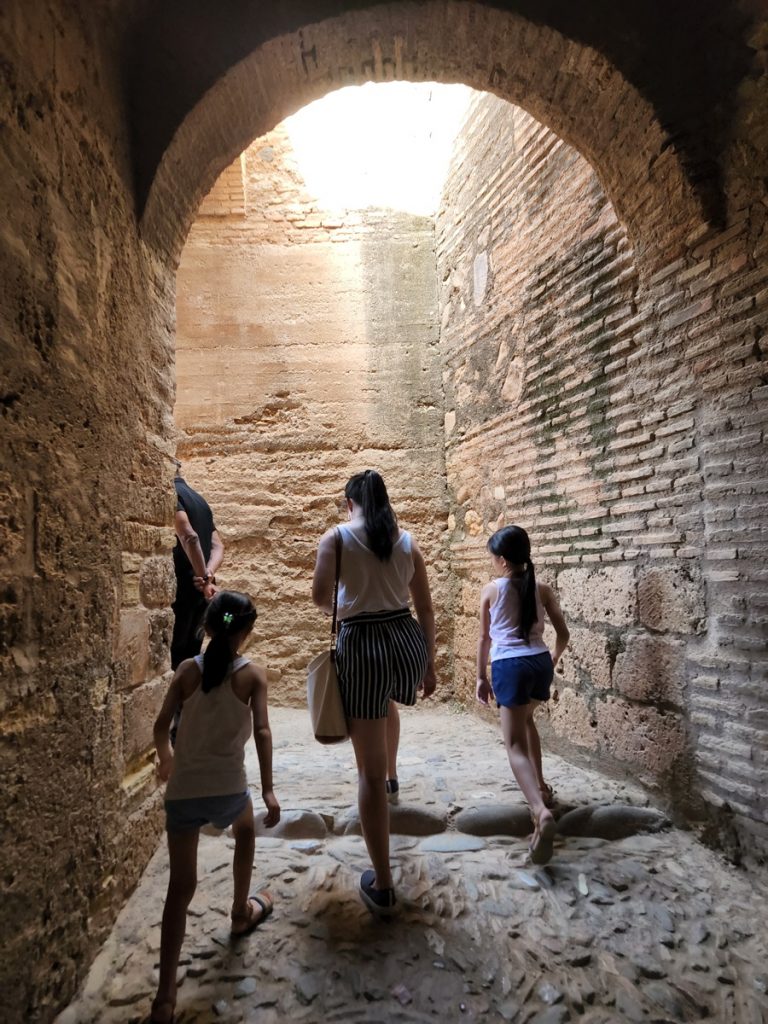
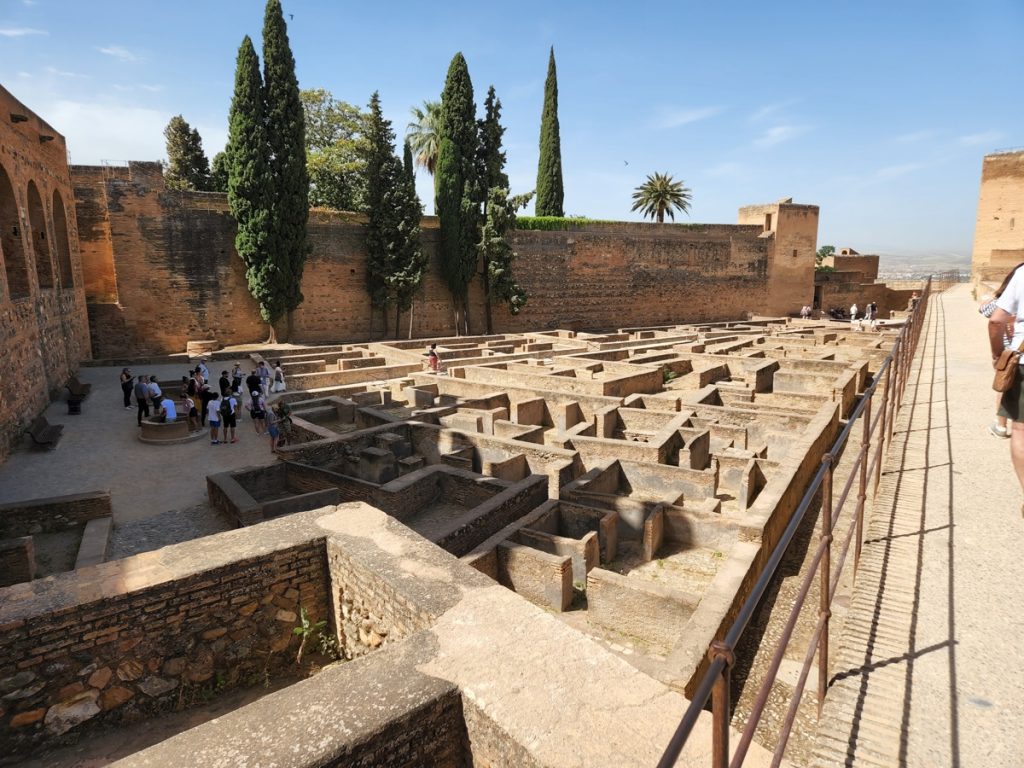
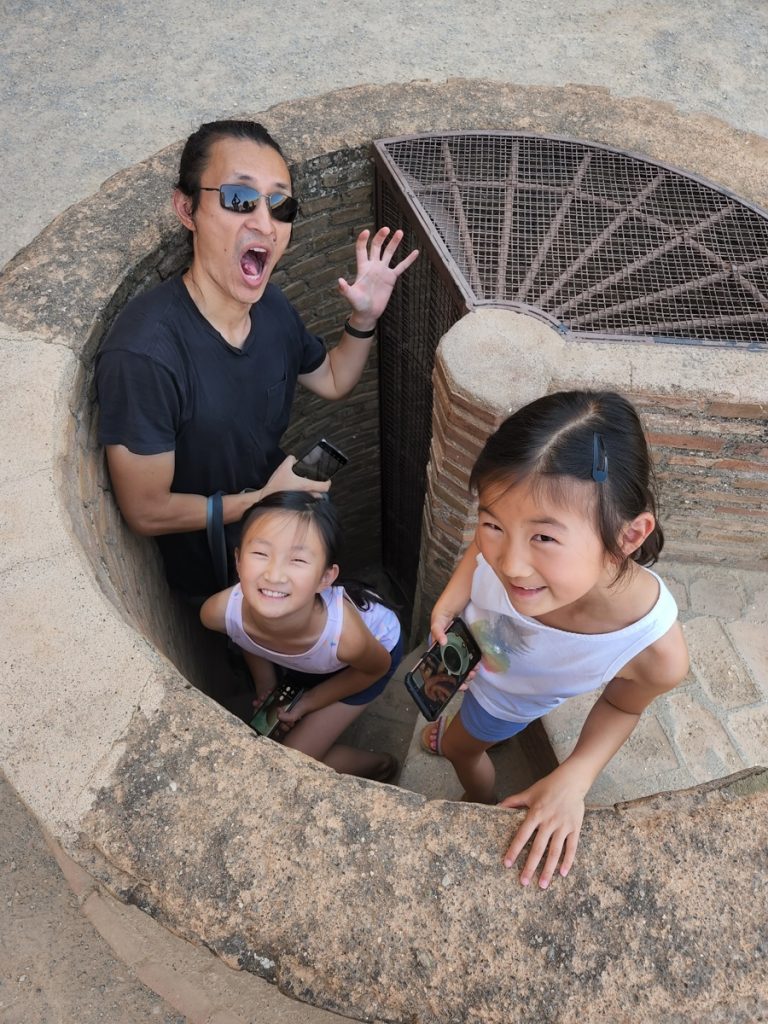
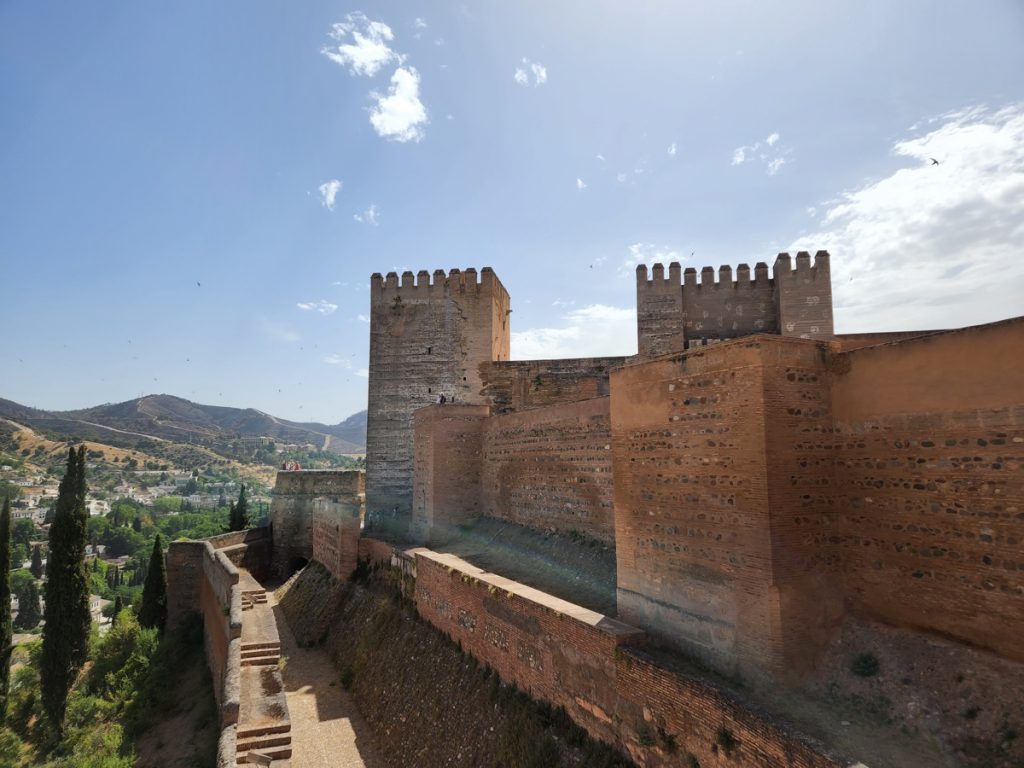
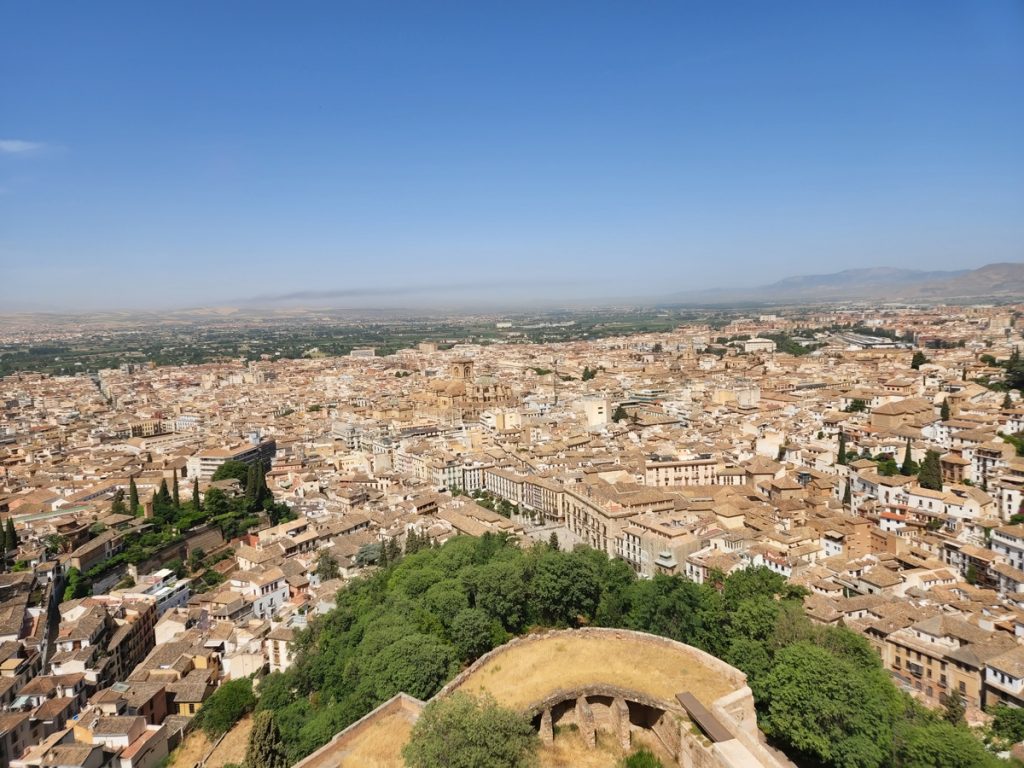
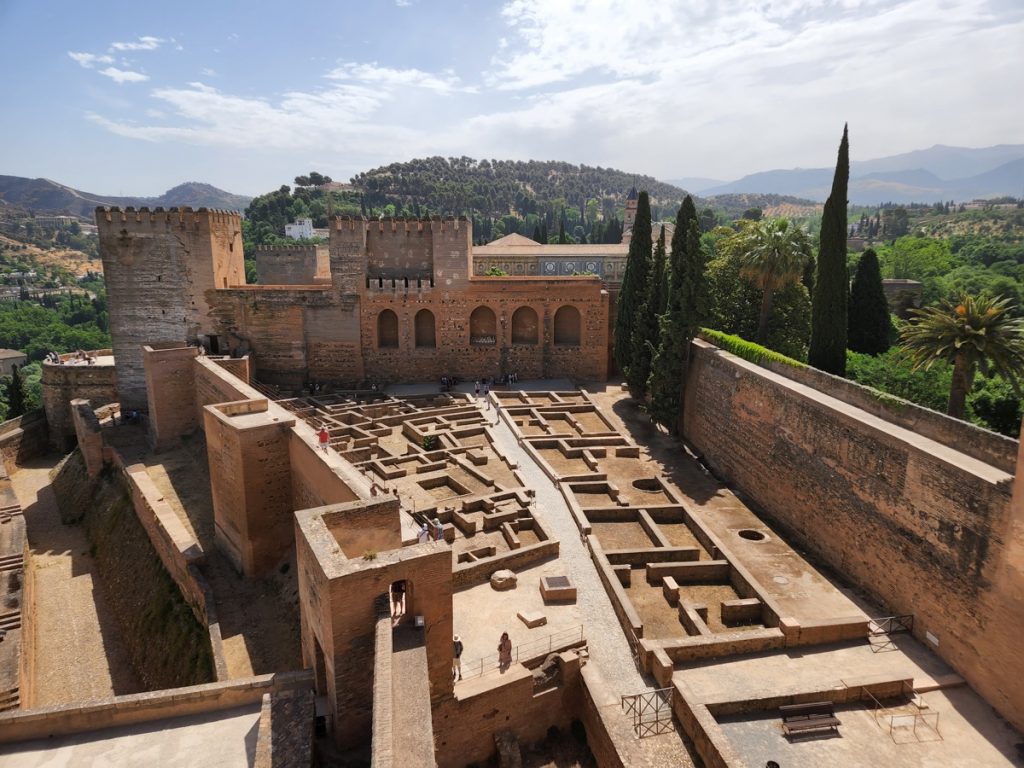
Alhambra – the K-Drama
Fans of Korean drama seem obsessed about visiting the filming locations of their favorite shows. For that reason, we had been joking about expecting buses of Korean tourists in Granada (well yes we did see a few). We were obviously not dorky like that… except we kind of were.
Here were some screenshots from the show Memories of the Alhambra:
According to the show, Jin-woo was able to book an impromptu trip to Spain, walk straight from the train station to the Alhambra, and roam the Nasrid Palaces and Alcazaba uninterrupted looking for video game clues. All this was supposed to take place when this monument received 2.5 million visitors a year and tickets often sold out months in advance!
Also, we came across the bridge where Jin-woo got shot at by archers early in the show (Puente Espinosa) and decided to replicate the scene. This was down the hill from the Alcazaba’s Torre de las Armas, and steps away from Plaza Nueva where our hotel was.
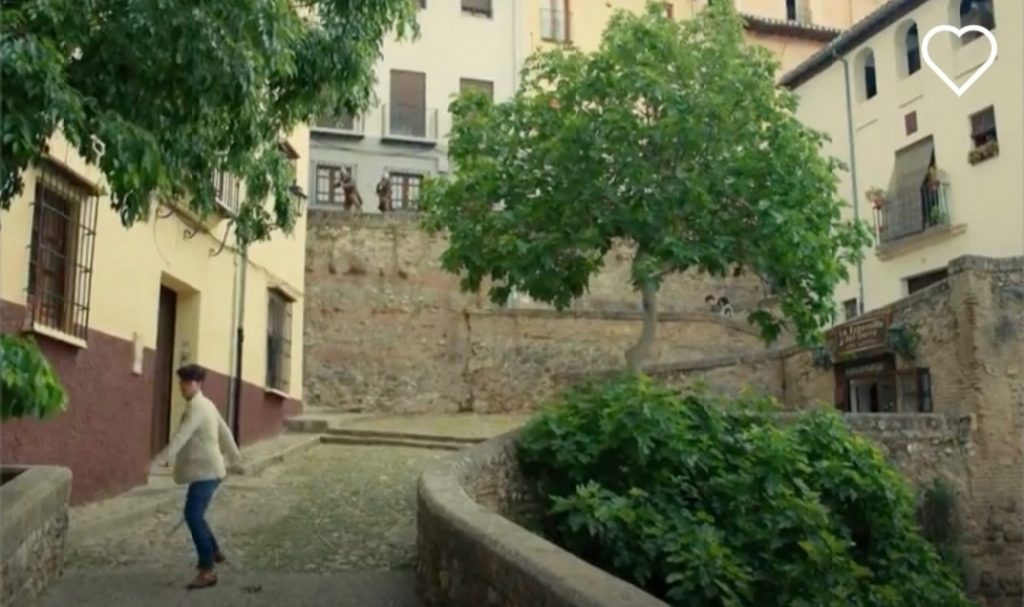
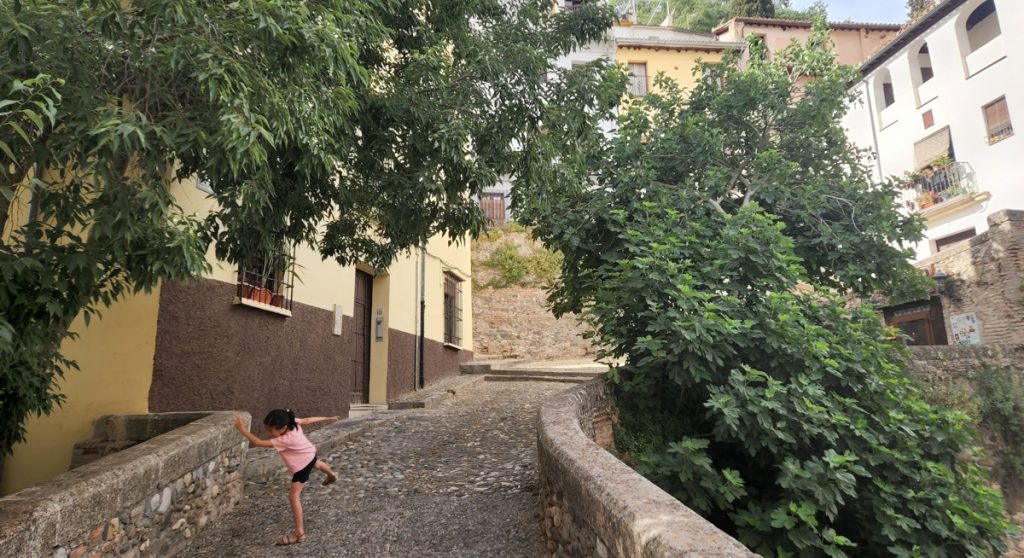
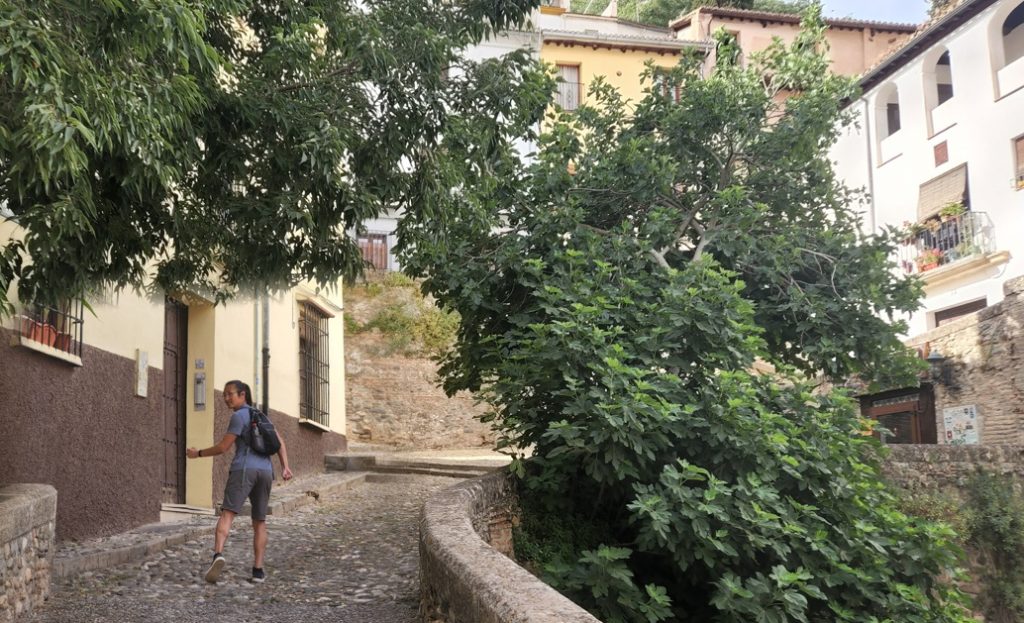
Albayzin
Albayzin, a historic neighborhood predating the Emirate of Granada, was among the more confusing things on a tourist’s to-do list. Every travel site said we gotta check it out, but it wasn’t clear exactly where its boundaries were or what to do there. When we looked up the name on Google Maps, though, we got a pin that looked prohibitively far.
Turned out, there was not much to do in Albayzin… but walk around. It was a cute and mostly residential neighborhood built on a hill, where windy cobblestone-paved slopes and stairs led to one scenic lookout after another. Unlike San Francisco, these slopes were gentle and wouldn’t be a workout; however, the stones were harsh on our feet wearing fairly thin flip flops. We were amazed by how cars could navigate this neighborhood, because half of the paths we traversed were not compatible with vehicles with wheels.
Mirador de San Nicolas was the center of Albayzin for the average tourist like ourselves. Why? Because it had the most spectacular view of the Alhambra. When we came up here in the morning, we were so impressed by the view and immediately decided to come again at night. The kids did not object, either. Travel sites emphasized the various bus options to get up here, but I would recommend anyone halfway in shape to walk it. It was actually an easy 15-minute trek from the middle of the town, compared to any of the bus routes that make major detours around town.
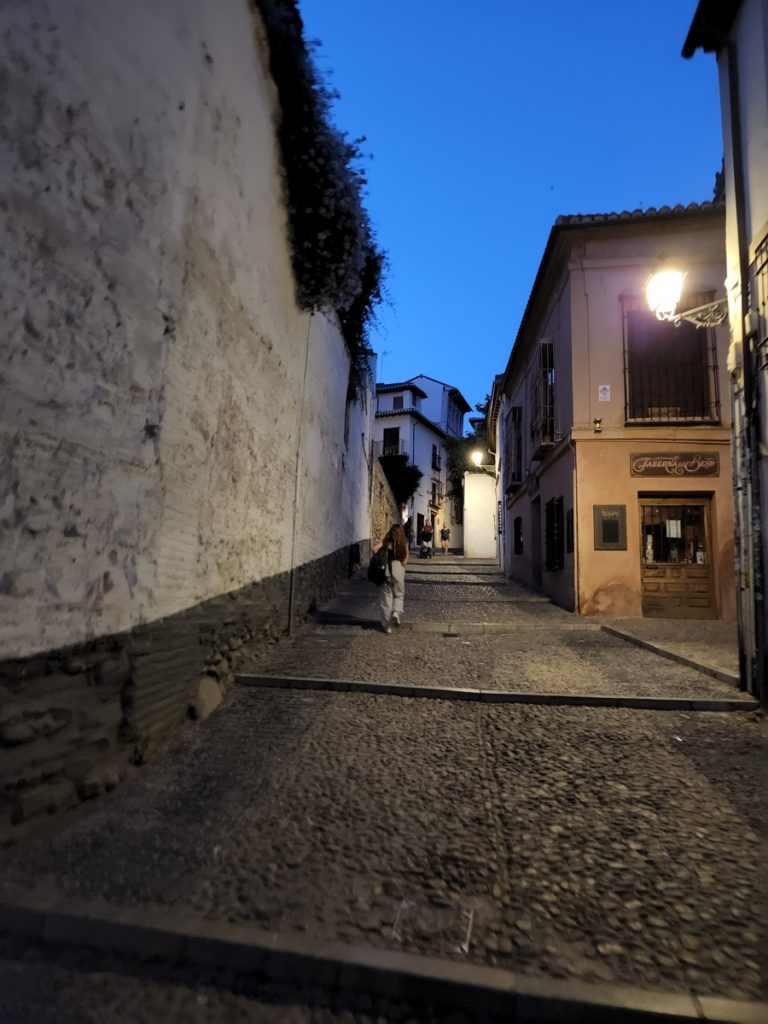
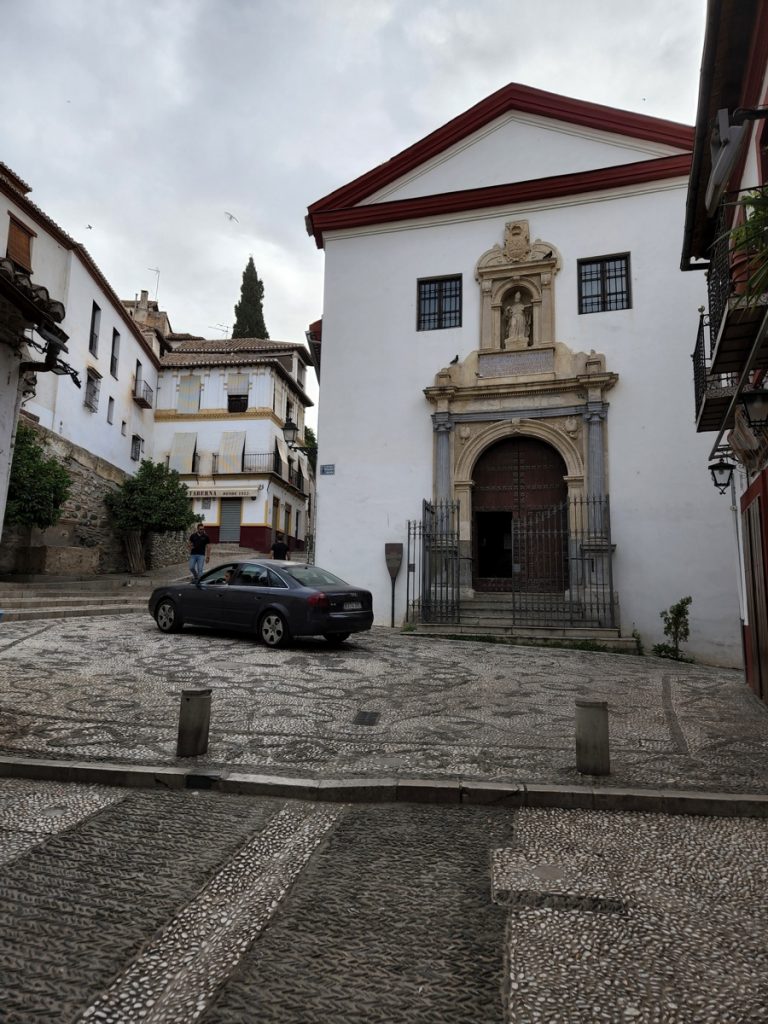
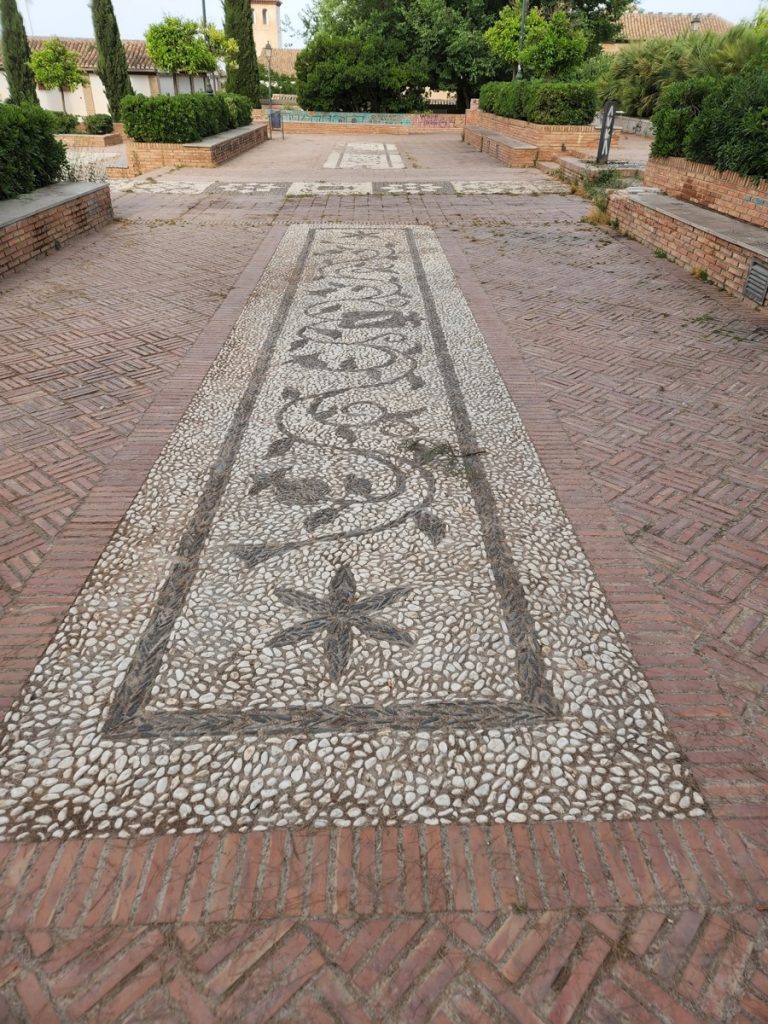
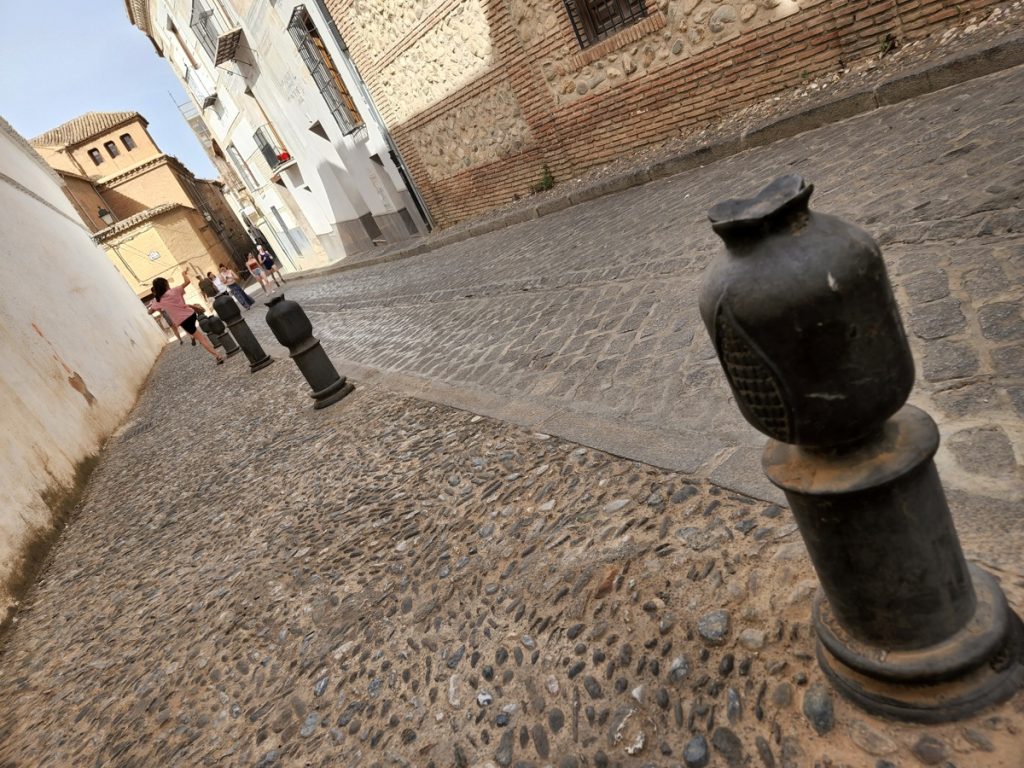
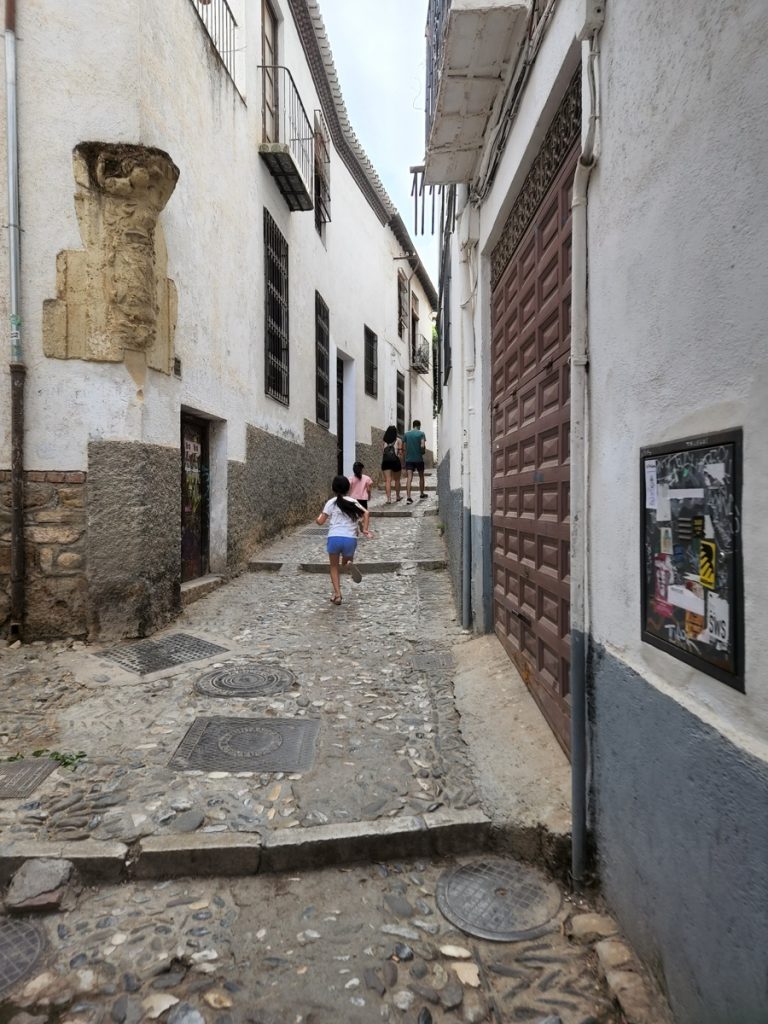
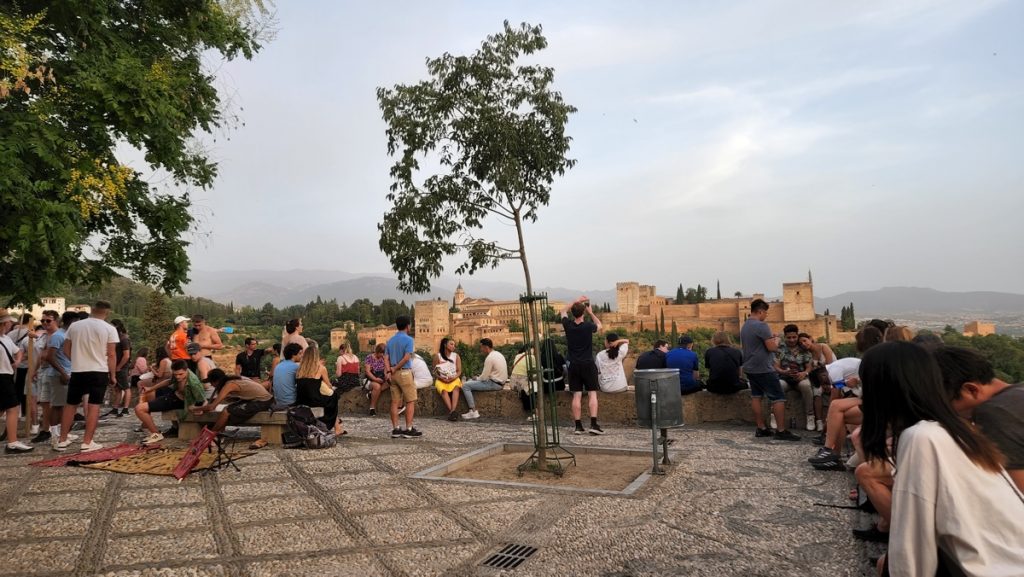
Souks & Teterias
Judging from restaurants around touristy neighborhoods, each city we visited had a decent amount of North African and Middle Eastern presence. None of them compared to Granada, though, where Arabic was commonly heard in the downtown area, usually among shopkeepers and their employees.
Right next to the cathedral, La Alcaiceria was a famed Arabian souk. Its name supposedly had to do with Byzantine emperor Justinianus granting Arabs monopoly over silk back in the 6th century, but this tale felt like a stretch since this souk wasn’t even around until the 15th century. What existed today, of course, had nothing to do with the original stuff. Every store sold identical souvenirs, from magnets to colorful glass lamps.
Just to the east of La Alcaiceira, behind Plaza Nueva, several blocks stretching into the foothills of Albayzin were filled with Moroccan and Lebanese restaurants, as well as Arabian tea houses (teterias). Tagines, kebabs, and mint teas were easily found on every menu. Every tea house had someone speaking fluent English at the door inviting passer-byes in for a refreshment.
We spent a lot of time traversing the souvenir stores because the end of our trip was coming up. We also spent a lot of time in teterias because they were more comfortable than most dining establishments. These neighborhoods were like part of Disney World that gave better Ali Baba vibes than Dubai’s old town. Giant tourist trap? Sure. But it was fun, colorful, and delicious.
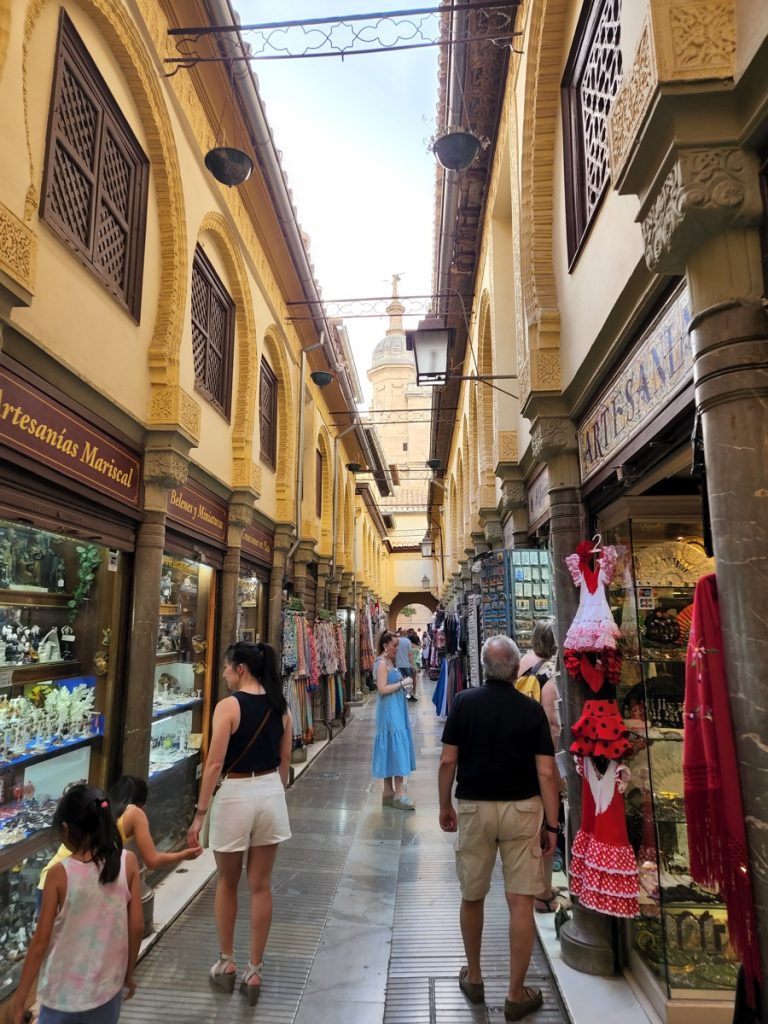
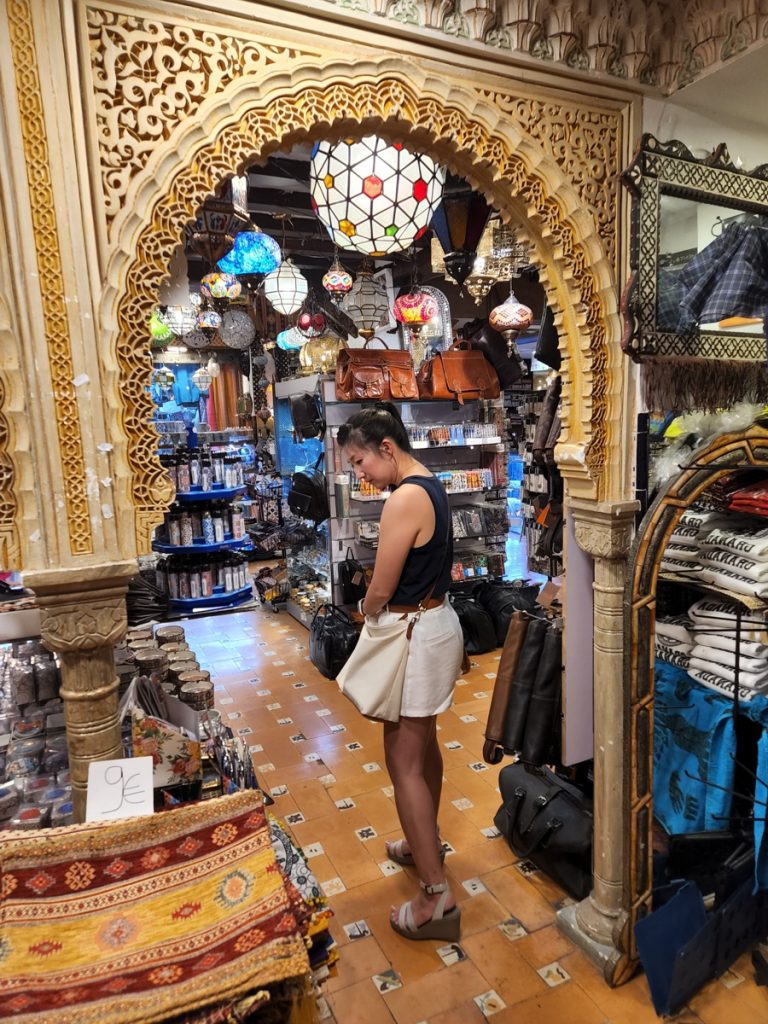
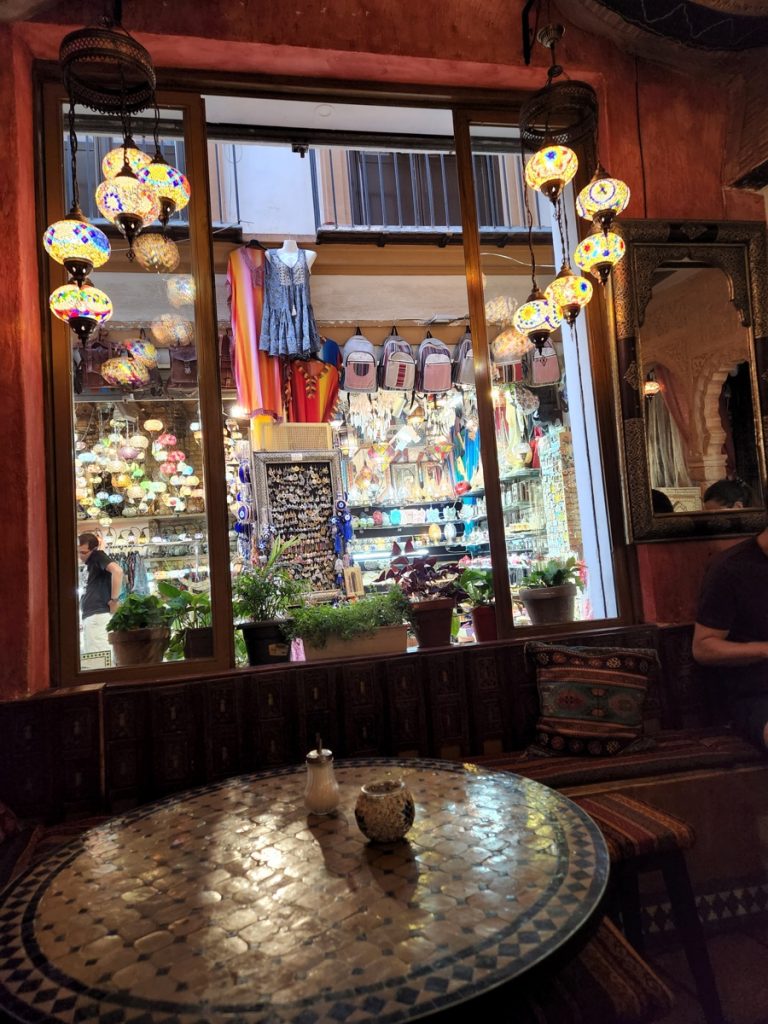
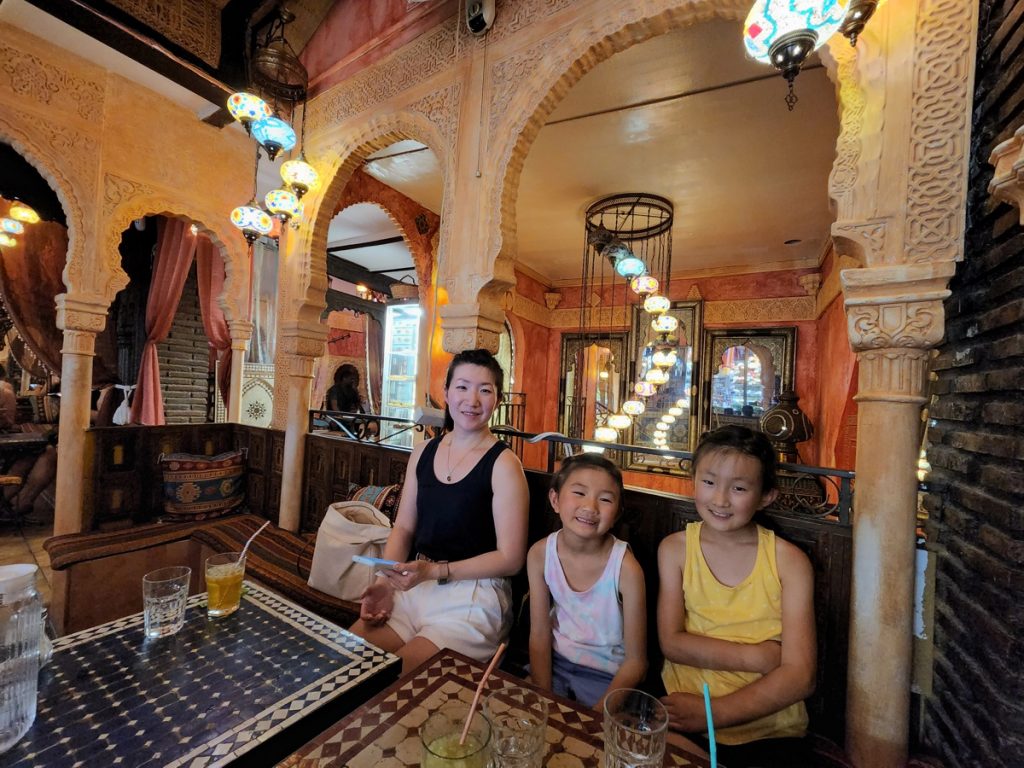
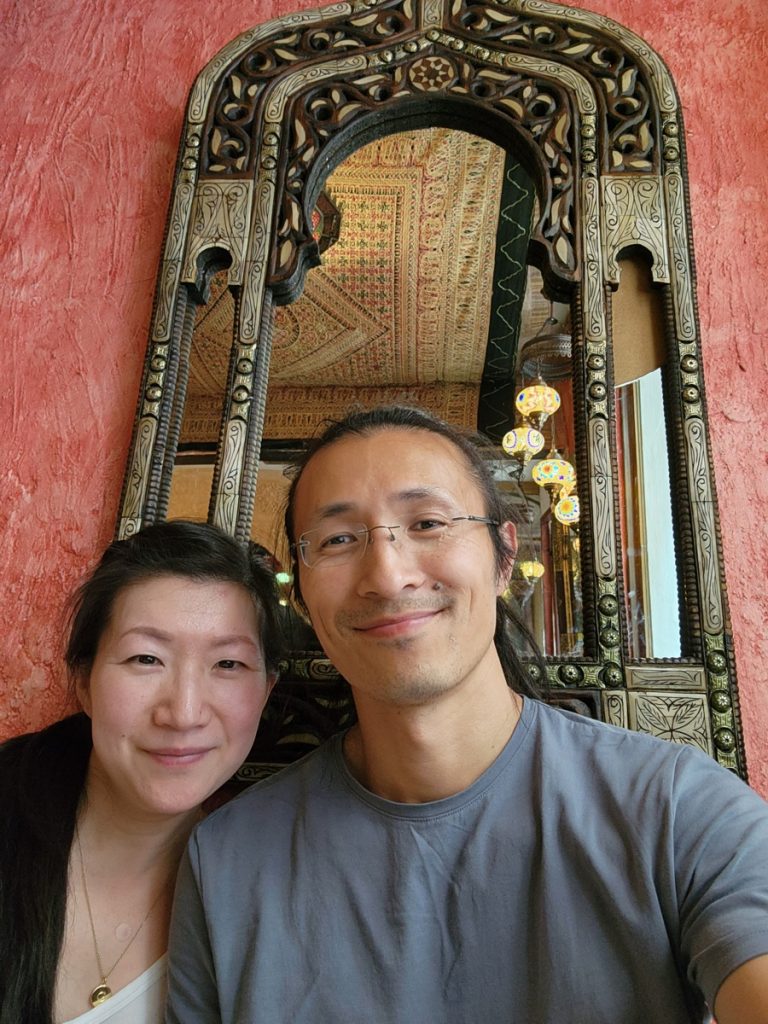
Other
Granada may have been our favorite city on this trip. Like Alhambra compared to other other cool buildings, it wasn’t necessarily that any particular feature here outshone its counterparts elsewhere. Instead, Granada offered a whole combo package of diverse things for different moods. Hilly alleys vs. flat streets; Arabian vs. Spanish; ancient monuments vs. contemporary dining. We were never 15 minutes from another part of the city that offered completely different vibes.
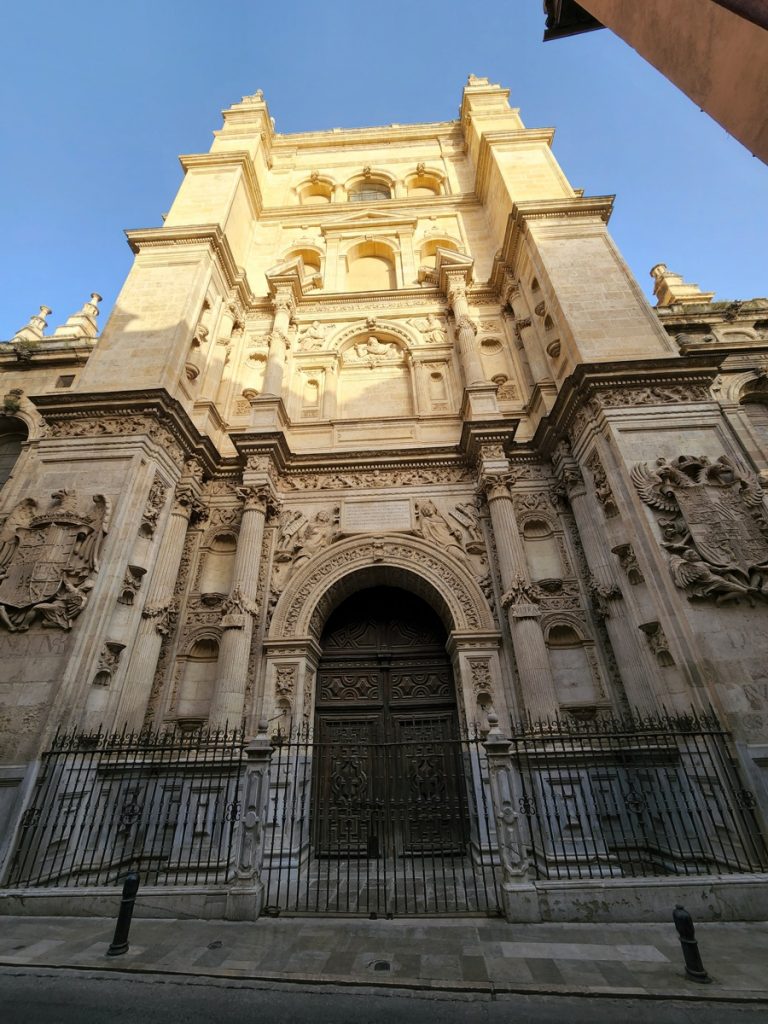
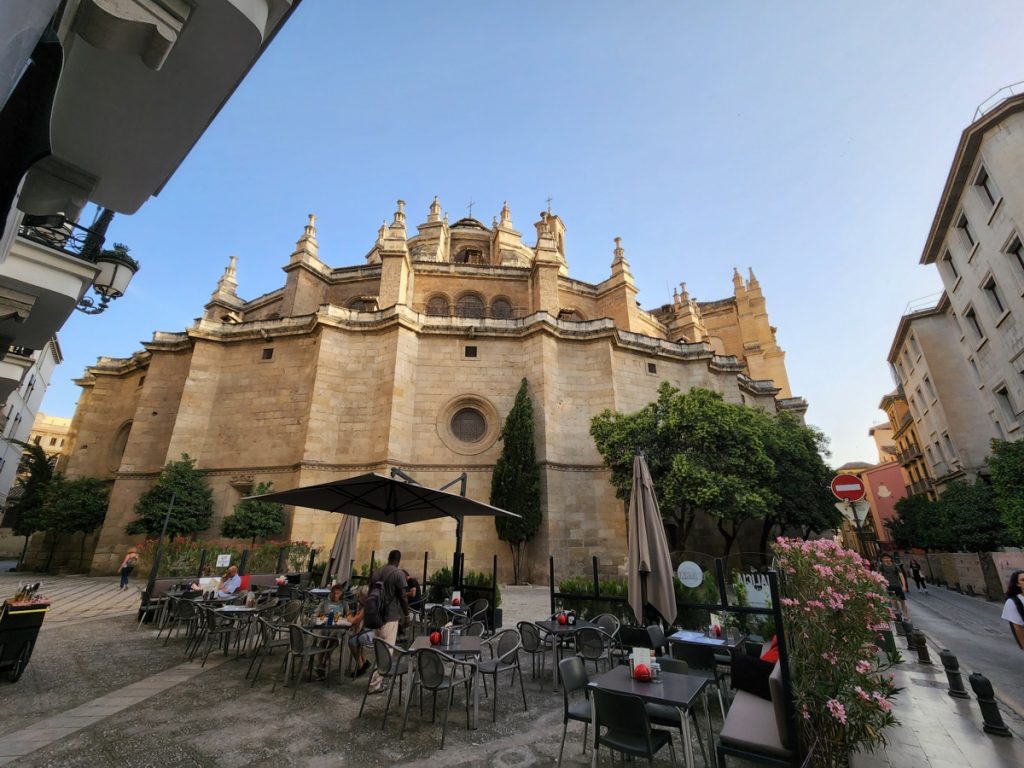
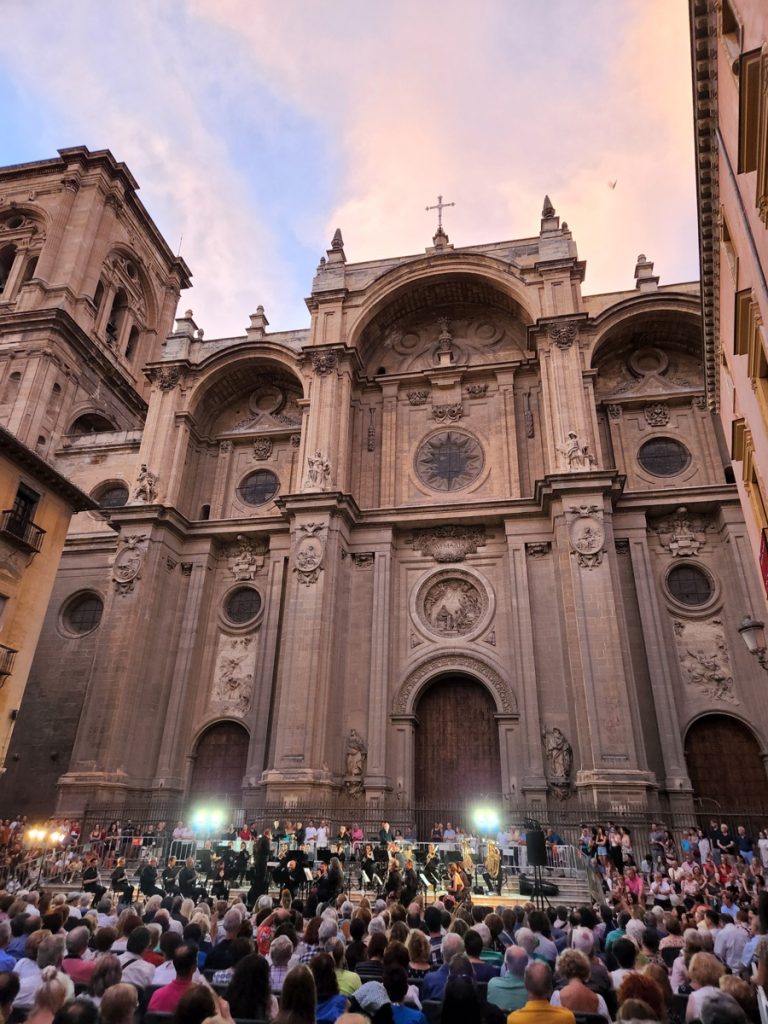
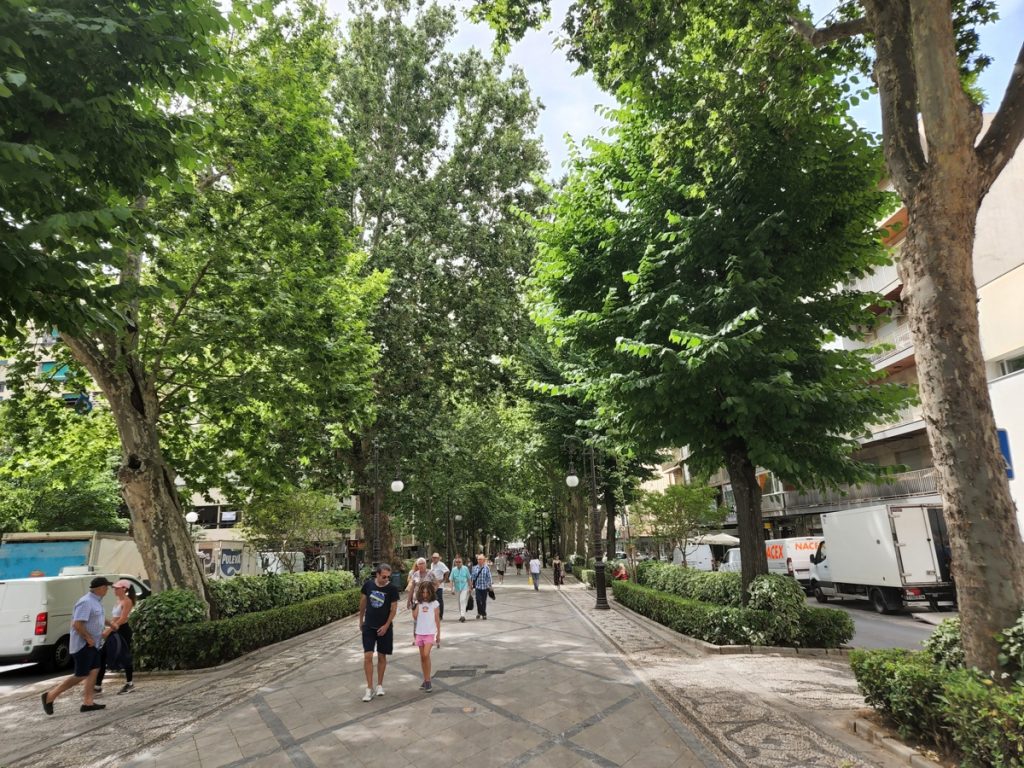
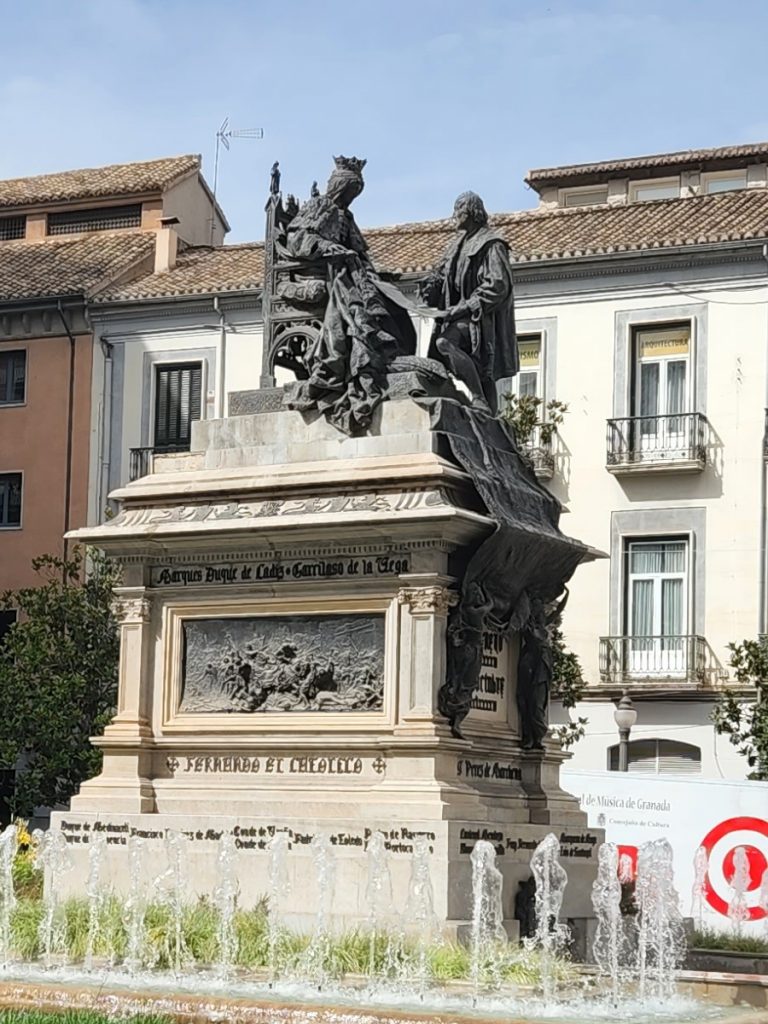
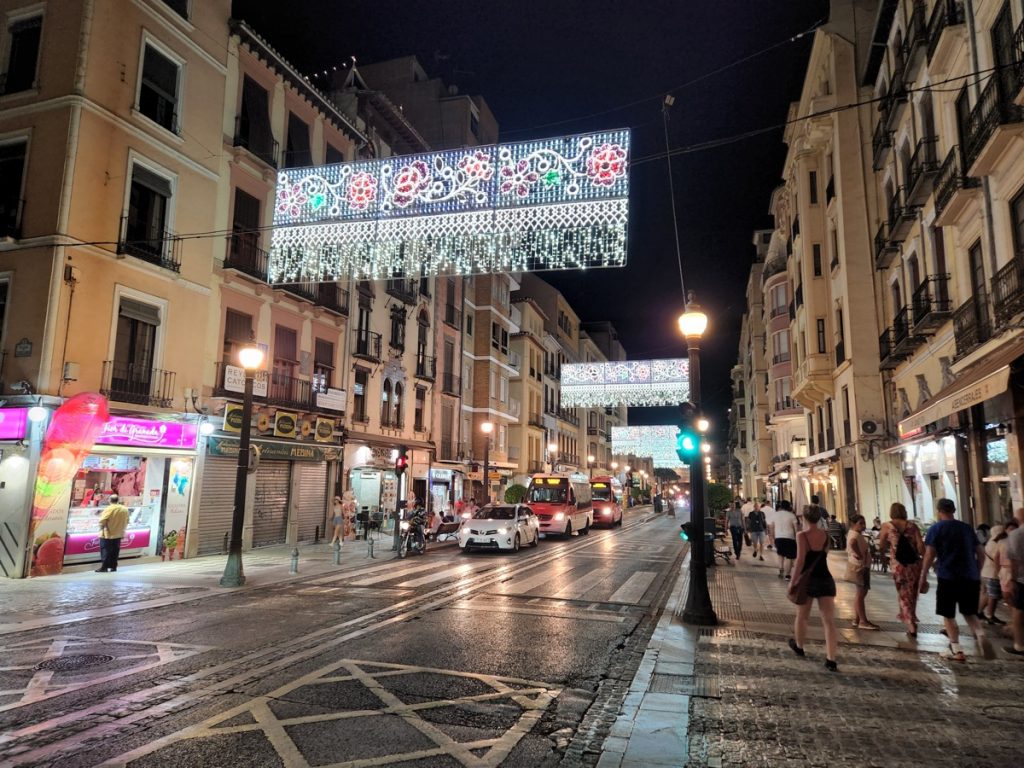
Rosemary Ladies
I would be remiss if I end the post without mentioning the rosemary ladies in Granada. They were everywhere. We had spotted one or two earlier, but our direct encounter happened on our way back from the Alhambra.
It was an old lady on the street. She looked older than my grandma who passed away in her 90s, and was the size of both my grandmas combined. She held a single sprig of rosemary in one hand, and a plastic bagful in the other. Given that we were in a Mediterranean country, that rosemary must have been the grade-B quality stuff that got left behind in the herbs market at the end of the day. The plastic bag looked like something a Chinese corner store would give you for buying a single cheap item.
I managed to walk by without incident, but Hong got targeted (probably because she actually understood Spanish). She didn’t want it but the old lady insisted that the grade-B-minus rosemary was a gift. How could she reject a gift from a 100-year-old grandma, right? Then, while she awkwardly held the herb in her hand, the lady did a bunch of ritual-looking things like saying words (no idea what they were), touching her, instructing her to stamp her feet a few times, etc.. Things got worse when the lady turned to me and subjected me to the same ritual. Definitely could have been some sort of Catholic prayer and blessing. Definitely could have been a practical joke, too. It got worse when the lady had the two of us hug and kiss. While I’d kiss my wife all the time, doing so on command by a stranger in a language I didn’t understand was just… a textbook example of what not to do while being a tourist.
At least the climax was now over and we went on with business. By that, I mean the rosemary lady asked us for money. Neither of us was surprised by this point, however much we may have been confused earlier. I struggled with how to react because, unlike our more action-packed experience in Paris, we did receive a “gift” and a blessing from a friendly old lady. I looked to Hong to see if I needed to pull out some pity contribution, and was annoyingly aware that my smallest bill was a 5. She wasn’t willing to fall for that shit, so she handed the sprig back and told the lady that she never wanted that gift. After ten seconds of intense pushing back and forth, our family got rid of the rosemary and firmly walked away… while the lady cursed us in our back for not giving her money.
Lesson learned? Not sure. It would have been better if we avoided the rosemary lady entirely, but we would have never found out what she and her buddies were up to. Sometimes we were overly guarded in a foreign place and ended up being unnecessarily rude to someone just trying to make an honest buck, like in Milan. Tourist traps are everywhere, and as long as we come out safe, it’s kind of fun to experience their shenanigans once in a while.
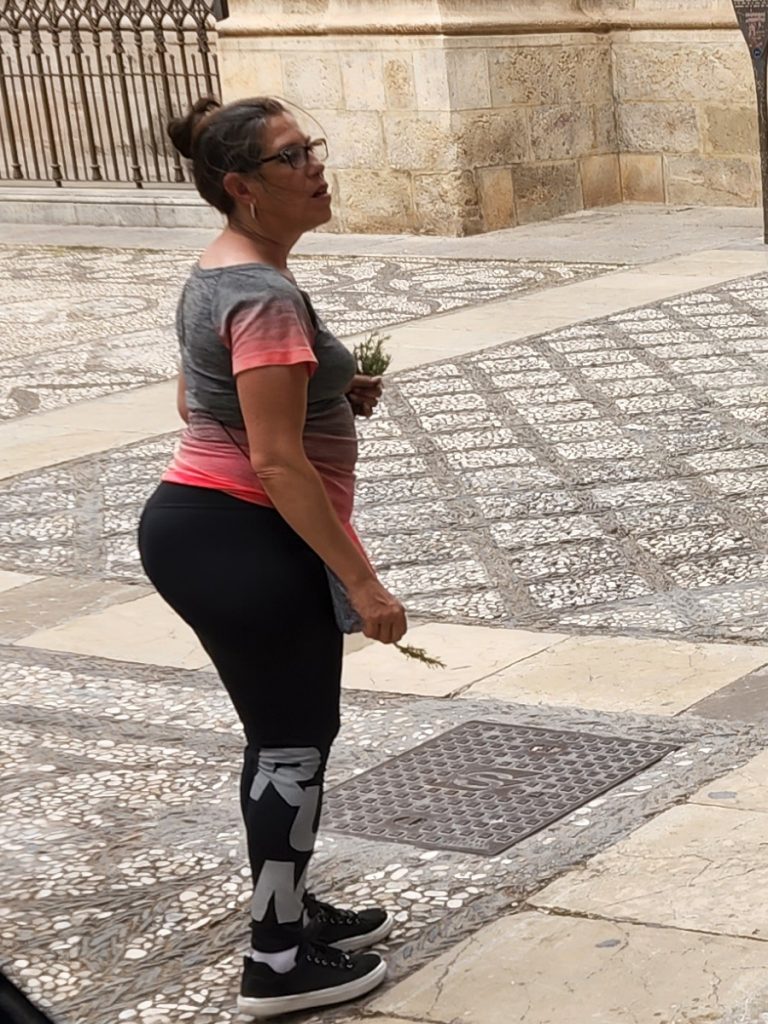
Hotel
Hotel Plaza Nueva, named after Plaza Nueva which it was adjacent to, had a terrific location. It was a small operation with just 25 rooms. Our “family room” was the penthouse that occupied the entire 4th floor. Sure we had to drag some suitcases up the last flight of stairs, but there were no upstairs neighbors and we got a lovely (if it weren’t for the sun) balcony.
Our L-shaped room was pretty big. It came with an AC unit that worked as well as my Spanish. We had to run it at max *AND* keep all window shades firmly shut to prevent the temperature from rising during the day. The room also came with a cute mini fridge that worked equally well, keeping our water below lukewarm at all times. The tap water was ice cold, though, which was amazing considering the ambient temperature throughout the city.
We did not get a key to the room. No physical, electronic, or digital key of any sort. Instead, we were given a 4-digit code to press into a little pad on the door. We had never been to a hotel like it, and it was unclear whether this code got reset after each guest. The small hotel seemed to have just one or two staff present during the day, and at night they shut the office down and locked the front door. It was a bit strange to depart the hotel early in the morning without formally checking out or saying bye to anyone.
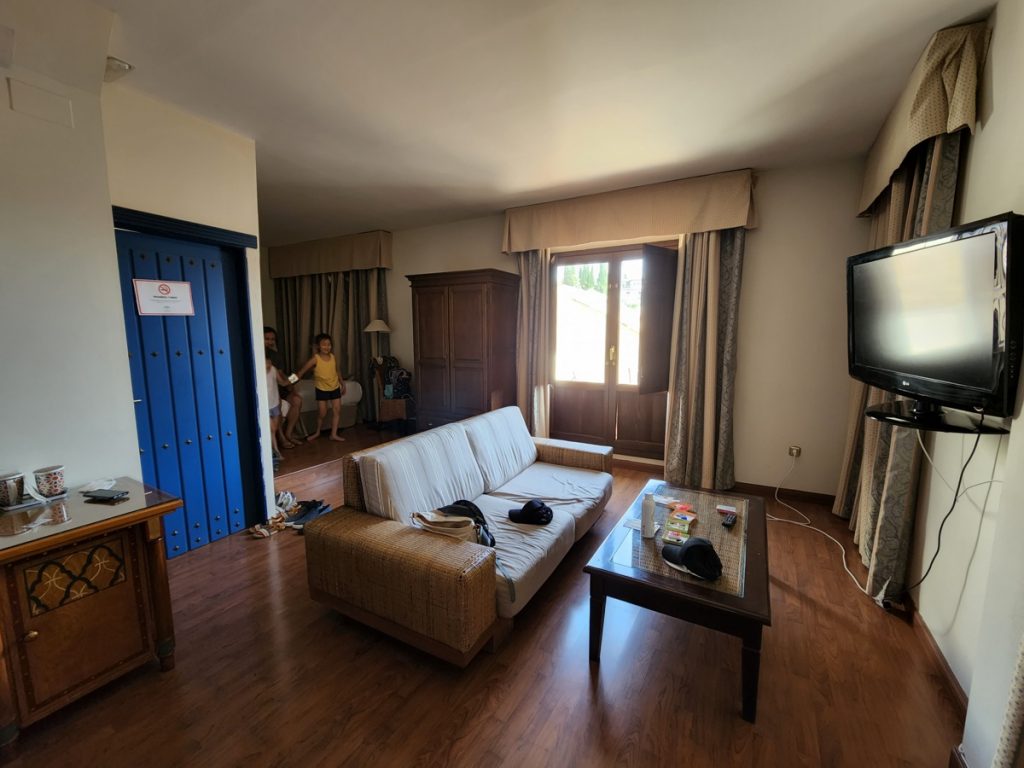
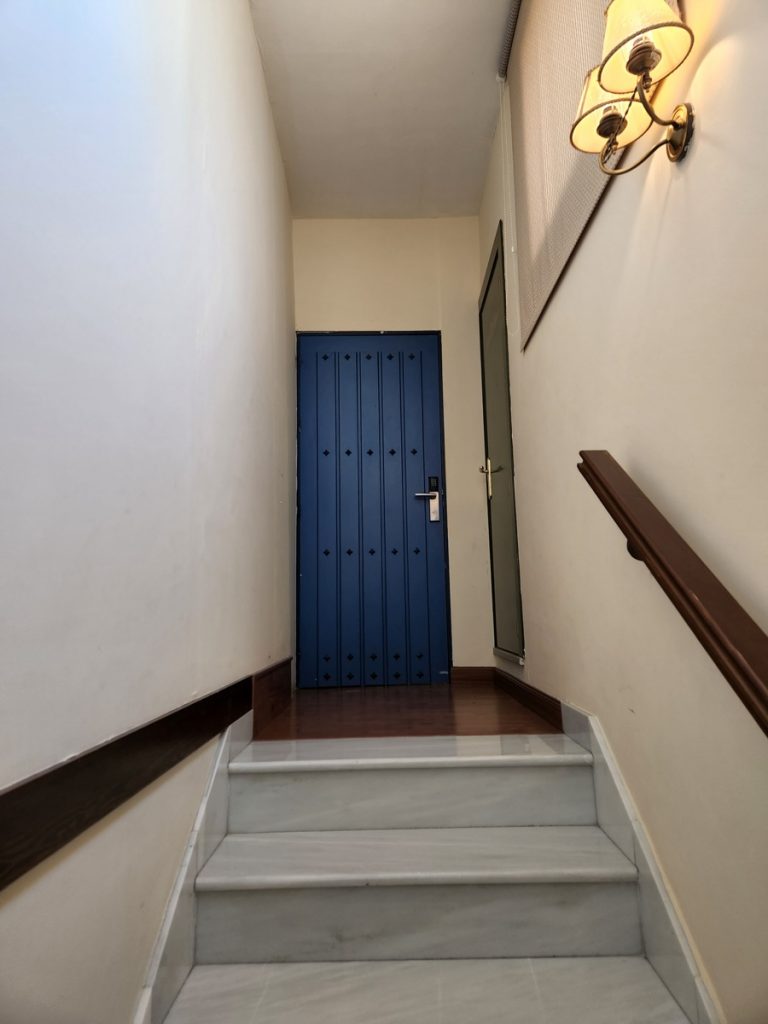
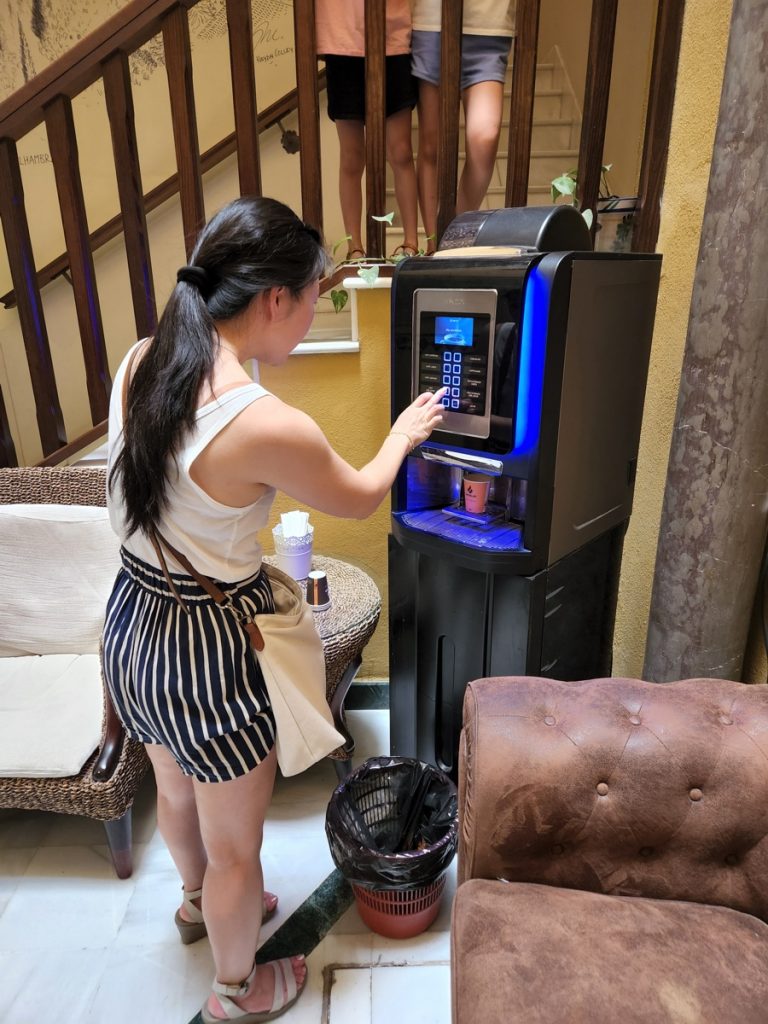

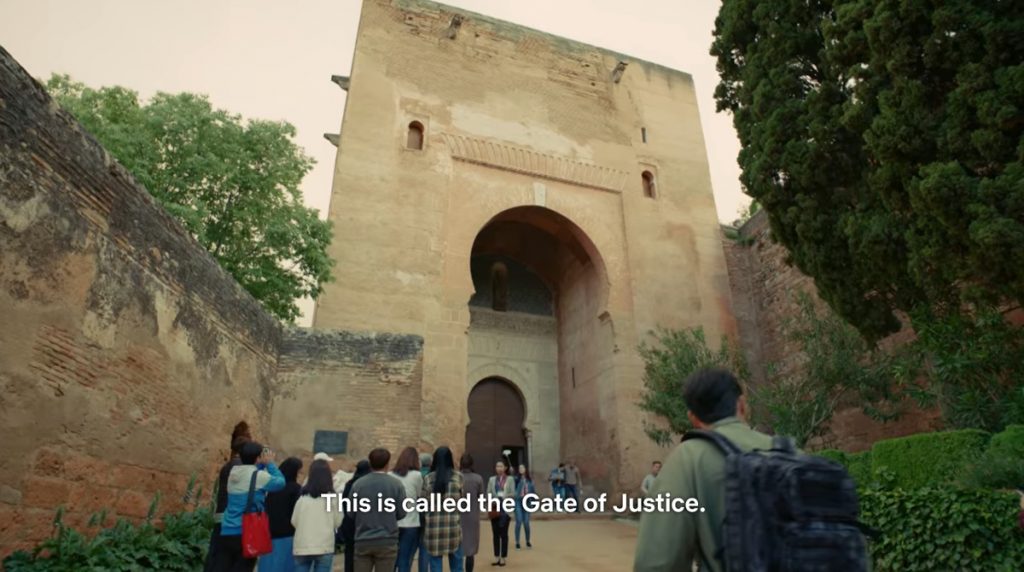
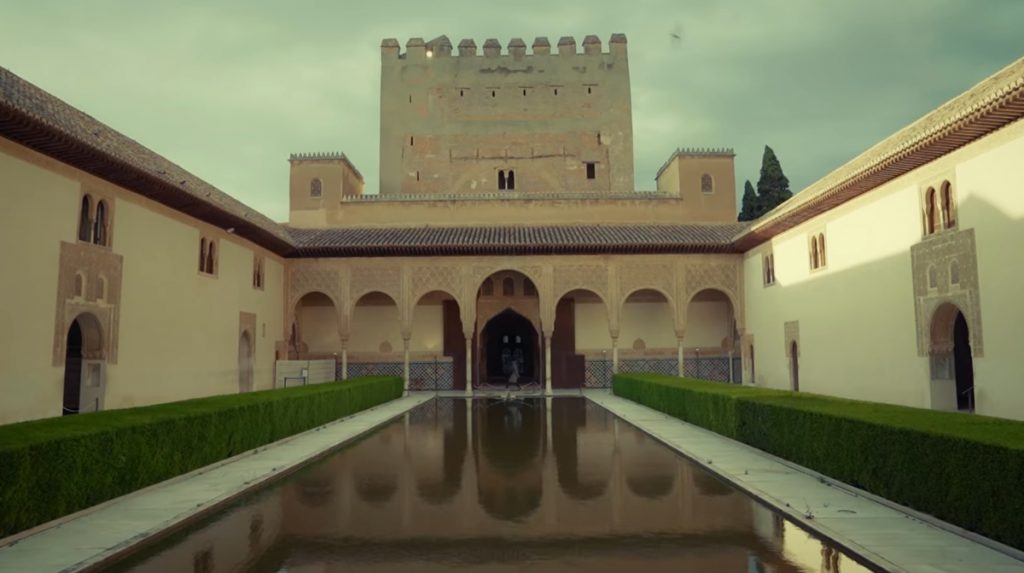

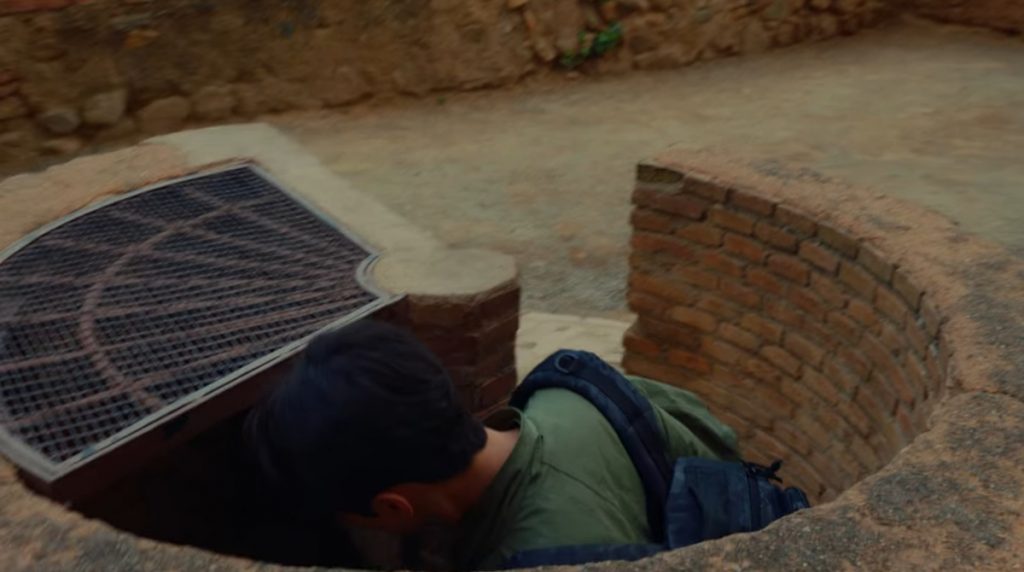
Andalucia 2022 (2/9) – Sevilla: Cool Before Dorne Was Cool – Peter's Blog
July 1, 2022 at 2:08 am[…] Granada: Memories of a K-Drama […]
Andalucia 2022 (7/9) – Stuff We Ate – Peter's Blog
July 3, 2022 at 2:26 pm[…] Granada: Memories of a K-Drama […]
Andalucia 2022 (4/9) – Cordoba: Capital of a Caliphate – Peter's Blog
July 4, 2022 at 2:40 pm[…] Granada: Memories of a K-Drama […]
Andalucia 2022 (3/9) – Ceuta & Algeciras: Day Trip to Africa – Peter's Blog
July 4, 2022 at 2:40 pm[…] Granada: Memories of a K-Drama […]